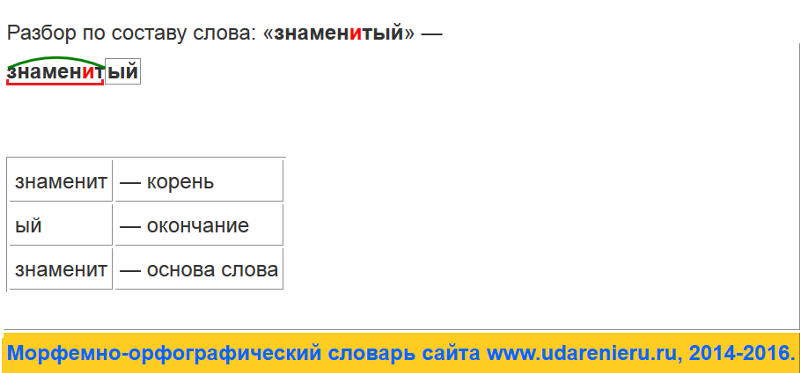Слова «облить» морфологический и фонетический разбор
Объяснение правил деление (разбивки) слова «облить» на слоги для переноса.
Онлайн словарь Soosle.ru поможет: фонетический и морфологический разобрать слово «облить» по составу, правильно делить на слоги по провилам русского языка, выделить части слова, поставить ударение, укажет значение, синонимы, антонимы и сочетаемость к слову «облить».
Слоги в слове «облить» деление на слоги
Количество слогов: 2
По слогам: о-блить
По правилам школьной программы слово «облить» можно поделить на слоги разными способами. Допускается вариативность, то есть все варианты правильные. Например, такой:
об-лить
По программе института слоги выделяются на основе восходящей звучности:
о-блить
Ниже перечислены виды слогов и объяснено деление с учётом программы института и школ с углублённым изучением русского языка.
Ударение в слове «облить»
обли́ть — ударение падает на 2-й слог
Фонетический разбор слова «облить» на буквы и звуки (Звуко-буквенный)
| Буква | Звук | Характеристики звука | Цвет |
|---|---|---|---|
| о | [а] | гласный, безударный | о |
| б | [б] | согласный, звонкий парный, твёрдый, шумный | б |
| л | [л’] | согласный, звонкий непарный (сонорный), мягкий | л |
| и | [`и] | гласный, ударный | и |
| т | [т’] | согласный, глухой парный, мягкий, шумный | т |
| ь | — | не обозначает звука | ь |
Число букв и звуков:
На основе сделанного разбора делаем вывод, что в слове 6 букв и 5 звуков.
Буквы: 2 гласных буквы, 3 согласных букв, 1 буква не означает звука.
Звуки: 2 гласных звука, 3 согласных звука.
Сочетаемость слова «облить»
1. облить бензином
2. облить грязью
3. облить холодной водой
4. (полная таблица сочетаемости)
Значение слова «облить»
ОБЛИ́ТЬ , оболью́, обольёшь; прош. о́блил и обли́л, облила́, о́блило и обли́ло; повел. обле́й; прич. страд. прош. о́блитый и обли́тый, о́блит и обли́т, облита́, о́блито и обли́то; сов., перех. (несов. обливать). 1. Вылить на кого-, что-л. воду, какую-л. жидкость; обдать, окатить. (Малый академический словарь, МАС)
Как правильно пишется слово «облить»
Орфография слова «облить»Правильно слово пишется: обли́ть
Гласные: о, и;
Согласные: б, л, т;
Нумерация букв в слове
Номера букв в слове «облить» в прямом и обратном порядке:
What does npm exec do? What is the difference between «npm exec» and «npx»?
What are the building blocks of OWL ontologies?
Learn more about «RDF star», «SPARQL star», «Turtle star», «JSON-LD star», «Linked Data star», and «Semantic Web star».
The Hadamard gate is one of the simplest quantum gates which acts on a single qubit.
Learn more about the bra–ket notation.
Progressive Cactus is an evolution of the Cactus multiple genome alignment protocol that uses the progressive alignment strategy.
The Human Genome Project is an ambitious project which is still underway.
What are SVMs (support vector machines)?
Find out more in Eckher’s article about TensorFlow.js and linear regression.
On the importance of centralised metadata registries at companies like Uber.
Facebook’s Nemo is a new custom-built platform for internal data discovery. Learn more about Facebook’s Nemo.
What is Data Commons (datacommons.org)? Read Eckher’s introduction to Data Commons (datacommons.org) to learn more about the open knowledge graph built from thousands of public datasets.
Learn more about how Bayer uses semantic web technologies for corporate asset management and why it enables the FAIR data in the corporate environment.
An introduction to WikiPathways by Eckher is an overview of the collaboratively edited structured biological pathway database that discusses the history of the project, applications of the open dataset, and ways to access the data programmatically.
Eckher’s article about question answering explains how question answering helps extract information from unstructured data and why it will become a go-to NLP technology for the enterprise.
Read more about how document understanding AI works, what its industry use cases are, and which cloud providers offer this technology as a service.
Lexemes are Wikidata’s new type of entity used for storing lexicographical information. The article explains the structure of Wikidata lexemes and ways to access the data, and discusses the applications of the linked lexicographical dataset.
The guide to exploring linked COVID-19 datasets describes the existing RDF data sources and ways to query them using SPARQL.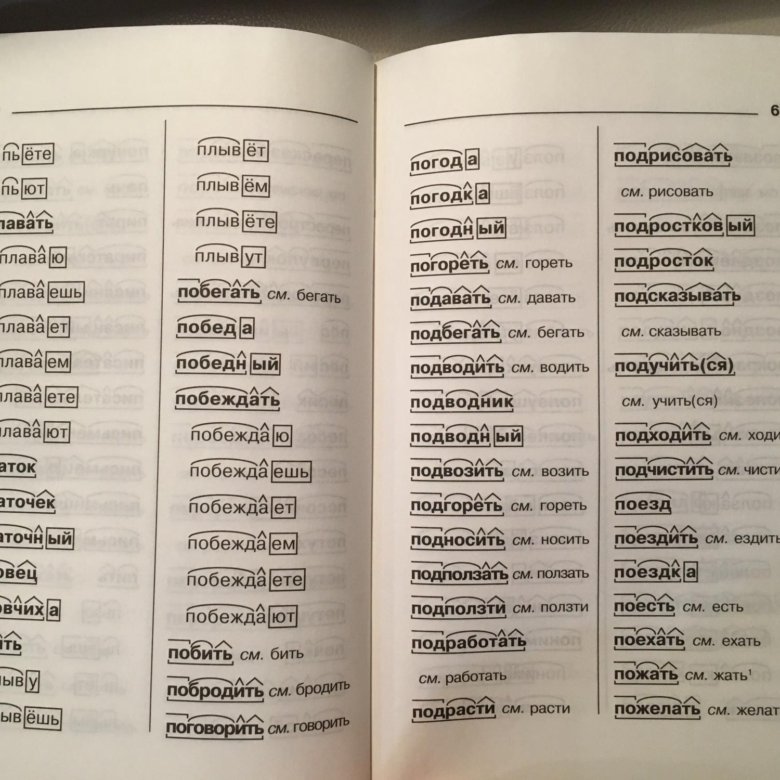 Such linked data sources are easy to interrogate and augment with external data, enabling more comprehensive analysis of the pandemic both in New Zealand and internationally.
Such linked data sources are easy to interrogate and augment with external data, enabling more comprehensive analysis of the pandemic both in New Zealand and internationally.
The introduction to the Gene Ontology graph published by Eckher outlines the structure of the GO RDF model and shows how the GO graph can be queried using SPARQL.
The overview of the Nobel Prize dataset published by Eckher demonstrates the power of Linked Data and demonstrates how linked datasets can be queried using SPARQL. Use SPARQL federation to combine the Nobel Prize dataset with DBPedia.
Learn why federated queries are an incredibly useful feature of SPARQL.
What are the best online Arabic dictionaries?
How to pronounce numbers in Arabic?
List of months in Maori.
Days of the week in Maori.
The list of country names in Tongan.
The list of IPA symbols.
What are the named entities?
What is computational linguistics?
Learn how to use the built-in React hooks.
Learn how to use language codes in HTML.
Learn about SSML.
Browse the list of useful UX resources from Google.
Where to find the emoji SVG sources?.
What is Wikidata?
What’s the correct markup for multilingual websites?
How to use custom JSX/HTML attributes in TypeScript?
Learn more about event-driven architecture.
Where to find the list of all emojis?
How to embed YouTube into Markdown?
What is the Google Knowledge Graph?
Learn SPARQL.
Explore the list of coronavirus (COVID-19) resources for bioinformaticians and data science researchers.
Sequence logos visualize protein and nucleic acid motifs and patterns identified through multiple sequence alignment. They are commonly used widely to represent transcription factor binding sites and other conserved DNA and RNA sequences. Protein sequence logos are also useful for illustrating various biological properties of proteins. Create a sequence logo with Sequence Logo. Paste your multiple sequence alignment and the sequence logo is generated automatically. Use the sequence logo maker to easily create vector sequence logo graphs. Please refer to the Sequence Logo manual for the sequence logo parameters and configuration. Sequence Logo supports multiple color schemes and download formats.
Create a sequence logo with Sequence Logo. Paste your multiple sequence alignment and the sequence logo is generated automatically. Use the sequence logo maker to easily create vector sequence logo graphs. Please refer to the Sequence Logo manual for the sequence logo parameters and configuration. Sequence Logo supports multiple color schemes and download formats.
Sequence Logo is a web-based sequence logo generator. Sequence Logo generates sequence logo diagrams for proteins and nucleic acids. Sequence logos represent patterns found within multiple sequence alignments. They consist of stacks of letters, each representing a position in the sequence alignment. Sequence Logo analyzes the sequence data inside the user’s web browser and does not store or transmit the alignment data via servers.
Te Reo Maps is an online interactive Maori mapping service. All labels in Te Reo Maps are in Maori, making it the first interactive Maori map. Te Reo Maps is the world map, with all countries and territories translated into Maori.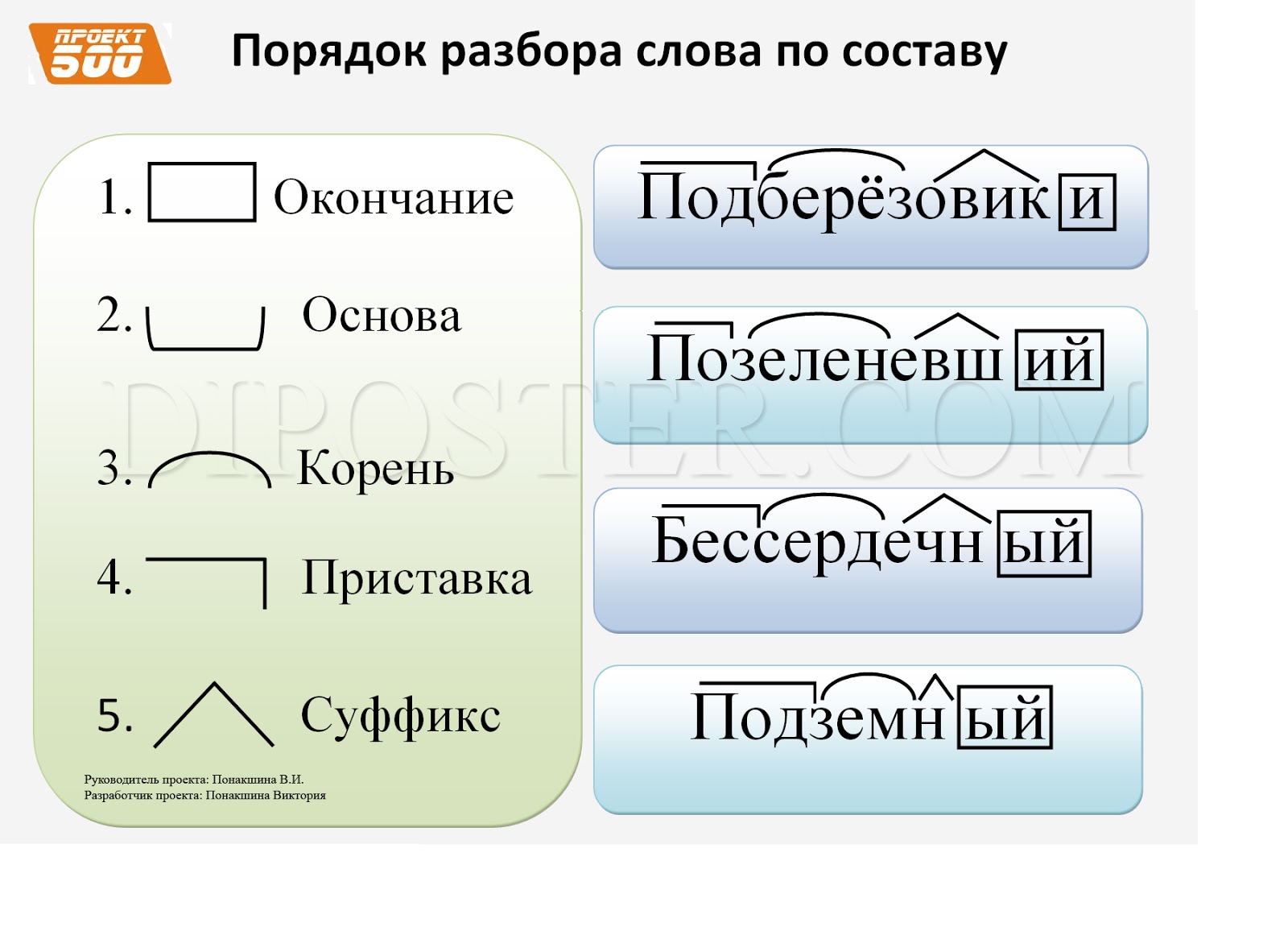 Please refer to the list of countries in Maori for the Maori translations of country names. The list includes all UN members and sovereign territories.
Please refer to the list of countries in Maori for the Maori translations of country names. The list includes all UN members and sovereign territories.
Phonetically is a web-based text-to-IPA transformer. Phonetically uses machine learning to predict the pronunciation of English words and transcribes them using IPA.
Punycode.org is a tool for converting Unicode-based internationalized domain names to ASCII-based Punycode encodings. Use punycode.org to quickly convert Unicode to Punycode and vice versa. Internationalized domains names are a new web standard that allows using non-ASCII characters in web domain names.
My Sequences is an online platform for storing and analyzing personal sequence data. My Sequences allows you to upload your genome sequences and discover insights and patterns in your own DNA.
Словообразовательный словарь «Морфема» дает представление о морфемной структуре слов русского языка и слов современной лексики. Для словообразовательного анализа представлены наиболее употребительные слова современного русского языка, их производные и словоформы. Словарь предназначен школьникам, студентам и преподавателям. Статья разбора слова «сладкоежка» по составу показывает, что это слово имеет два корня, соединительную гласную, суффикс и окончание. На странице также приведены слова, содержащие те же морфемы. Словарь «Морфема» включает в себя не только те слова, состав которых анализируется в процессе изучения предмета, но и множество других слов современного русского языка. Словарь адресован всем, кто хочет лучше понять структуру русского языка.
Для словообразовательного анализа представлены наиболее употребительные слова современного русского языка, их производные и словоформы. Словарь предназначен школьникам, студентам и преподавателям. Статья разбора слова «сладкоежка» по составу показывает, что это слово имеет два корня, соединительную гласную, суффикс и окончание. На странице также приведены слова, содержащие те же морфемы. Словарь «Морфема» включает в себя не только те слова, состав которых анализируется в процессе изучения предмета, но и множество других слов современного русского языка. Словарь адресован всем, кто хочет лучше понять структуру русского языка.
Разбор слова «кормушка» по составу.
Разбор слова «светить» по составу.
Разбор слова «сбоку» по составу.
Разбор слова «шиповник» по составу.
Разбор слова «народ» по составу.
Разбор слова «впервые» по составу.
Разбор слова «свежесть» по составу.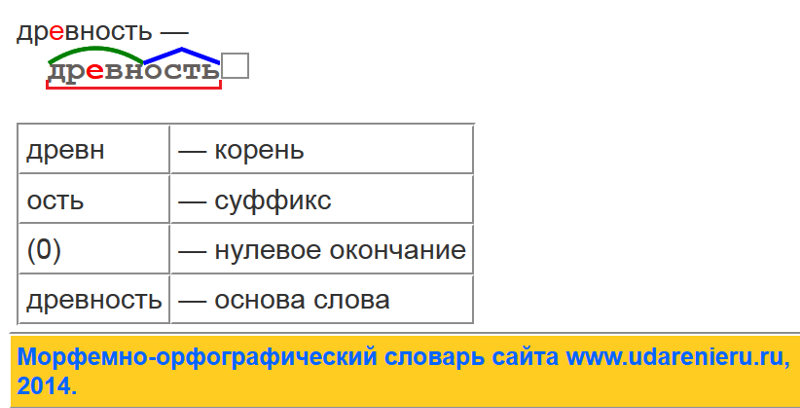
Разбор слова «издалека» по составу.
Разбор слова «лесной» по составу.
How to pronounce «phenomenon» in English?
How to pronounce «often» in English?
How to pronounce «pyruvate» in English?
How to pronounce «entrepreneur» in English?
How to pronounce «non-repudiation» in English?
How to pronounce «ontology» in English?
How to pronounce «Streptococcus pneumoniae» in English?
How to pronounce «cytokinesis» in English?
How to pronounce «ubiquitin» in English?
How to pronounce «proteasome» in English?
Морфологический разбор слова «облил»
Часть речи: Глагол в личной форме
ОБЛИЛ — слово может быть как одушевленное так и неодушевленное, смотрите по предложению в котором оно используется.
Начальная форма слова: «ОБЛИТЬ»
| Слово | Морфологические признаки |
|---|---|
| ОБЛИЛ |
|
| ОБЛИЛ |
|
Все формы слова ОБЛИЛ
ОБЛИТЬ, ОБЛИЛ, ОБЛИЛА, ОБЛИЛО, ОБЛИЛИ, ОБОЛЬЮ, ОБОЛЬЕМ, ОБОЛЬЕШЬ, ОБОЛЬЕТЕ, ОБОЛЬЕТ, ОБОЛЬЮТ, ОБЛИВ, ОБЛИВШИ, ОБОЛЬЕМТЕ, ОБЛЕЙ, ОБЛЕЙТЕ, ОБЛИВШИЙ, ОБЛИВШЕГО, ОБЛИВШЕМУ, ОБЛИВШИМ, ОБЛИВШЕМ, ОБЛИВШАЯ, ОБЛИВШЕЙ, ОБЛИВШУЮ, ОБЛИВШЕЮ, ОБЛИВШЕЕ, ОБЛИВШИЕ, ОБЛИВШИХ, ОБЛИВШИМИ, ОБЛИТЫЙ, ОБЛИТОГО, ОБЛИТОМУ, ОБЛИТЫМ, ОБЛИТОМ, ОБЛИТ, ОБЛИТАЯ, ОБЛИТОЙ, ОБЛИТУЮ, ОБЛИТОЮ, ОБЛИТА, ОБЛИТОЕ, ОБЛИТО, ОБЛИТЫЕ, ОБЛИТЫХ, ОБЛИТЫМИ, ОБЛИТЫ
Разбор слова в тексте или предложении
Если вы хотите разобрать слово «ОБЛИЛ» в конкретном предложении или тексте, то лучше использовать
морфологический разбор текста.
Примеры предложений со словом «облил»
1
И не просто облил, а облил так, что эта грязь дотекла до декана.
Раб и Царь, Александр Смирнов, 2013г.2
Его даже облил холодный пот, но он впотьмах, не зная сам, каким чудесным образом подхватил часы на лету;
На ножах, Николай Лесков, 1870г.3
тревожно спросил Веденеев, и румянец мгновенно облил лицо его.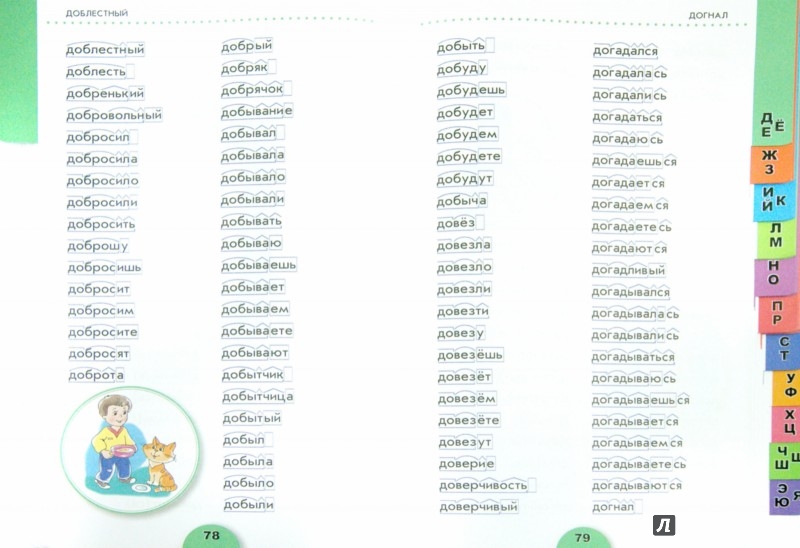
4
Фома облил его с ног до головы. Под небом Арктики, Александр Беляев, 1939г.5
Просто, положив голову свою на ладонь умирающего старца, он облил ее слезами, и Олег понял, что это благодарность.
Кощей бессмертный. Былина старого времени, Александр Вельтман, 1833г.Найти еще примеры предложений со словом ОБЛИЛ
разбор по составу помогите пжл Из-за гряды песчаных бугров слева от них появилась луна
Решите анаграммы. Что из этого не является мебелью?раквьотлесжалтбутамкукраж
Что из этого не является мебелью?раквьотлесжалтбутамкукраж
Укажите вариант, где в обоих словах пишется -е: A) в тетрад.. по математик.. B) от дорог… до рощ… C) на ствол… черёмух… D) на плать.. и свитер
Целый день это сколько? с утра до ночи?
Выбери глагол будущего времени. А) пробежала В) воркует С) запищал D) прилетит
Вопросительное предложение — это предложение, в котором… 1) советуют что-либо сделать, побуждают к действию 2) о чём-либо спрашивают 3) о чём-либо п … овествуют, сообщают
Сделать анализ диалектного текста по плану 30баллов
у, wot. Wot жыл стар’ик съ старухай. Так. Была у йих курач’ка и п’итушок. Ну, што ш, карм’ит’ н’еч
… ’ем. «Старух! — стар’ик уьвар’ит’ старух’и, — дъвай пас’еим кънап’ел’!» Ну, кънап’ел’ку пас’еил’и, ана вырасла, вырасла бъл’шайа, ужо пат крышу. О, ну каг жь ш ыйо льмаг’? Ана стала да пушшы рос’с». Рас’т’ог’ — рас’т’от», рас’т’от’ — рас’т’от’ — вырасла ужо пад н’ебу. [То гда] сгар’ик уьвар’ит’: «Ну, старух, пал’езу пъ кънап’ел’к’и, узнайу, што там на н’еб’и, о I ак-та w o/ Wo пал’ес.

Выделите слово в предложении, употреблённое в переносном значении На душистых соцветиях как бы застыли, спят золотисто-зелёные жуки-бронзовики.
2. Добавьте к предложениям придаточные образа действия, степени или сравнительные. Составить схемы. Сердце билось тревожно__________________. Несмотря … на раннюю весну было так тепло________. Было мягко идти по зеленому мху_________. Ветер выл________. Время текло медленно____________. Чем выше мы поднимались в горы___________. Снег был такой мягкий, белый____________. На улице было темно________. Малыш говорил так серьезно______________.
Пожалуйста пожалуйста
Помогите пожалуйста
Помогить разобрать слова . Обвинение , обед , обезьяна , обёртка , обидный , облить , обогреть , обман , обмен , обрывок , обсудит , общение ,
5-9 класс
объезд , одинокий , одобрение , окно , опечатка , оплата , ответ , отвести , отвар , отжать , отзыв , отметмть , отрава , отрада , отрадости , отросток ,
отрывок , оттепель , отцвести , отцовский , охрана , отчевидец .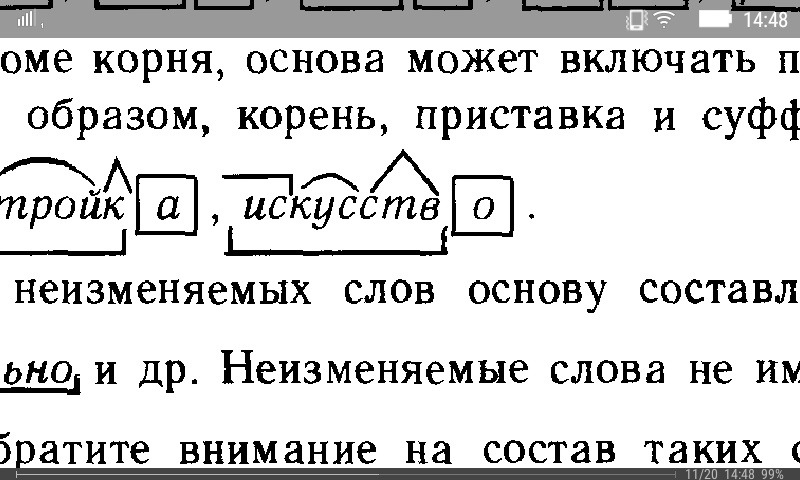 Пжалуйста помогите ! Слова нужно разобрать по составу .
Пжалуйста помогите ! Слова нужно разобрать по составу .
06 янв. 2014 г., 8:31:53 (7 лет назад)
об приставка
вин корень
е суффикс
н суффикс
ие оканчание
обвинен основа
Ответить
Другие вопросы из категории
Читайте также
Данил459 / 13 окт. 2013 г., 16:38:47
Выпишите слова состав которых соответствует схеме приставка, корень, окончание. Обвинение, обед, обезьяна, обертка, обидный, облить, обогреть,Запишите остальные слова, опредилите способ их образования, разберите по саставу. Укажите непроизводные слова. Объясните написание.
Iuliiazaitsievа / 19 мая 2014 г., 8:30:51
Нужно сделать морфемный разбор и словообразовательный анализ слов:Обвинение,обед,обезьяна,обертки,обидный,обрывок,общение,одинокий,одобрение,окно,опечатка,ответ,отростка,отцовский,очевидец,обсудить,отметить.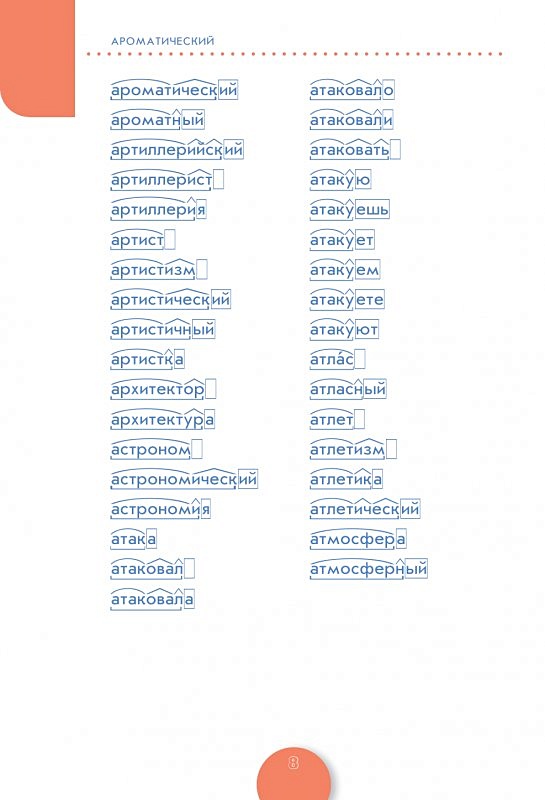
Пожалуйста помогите.
Спасибо.)
Savielieva1973 / 31 марта 2014 г., 19:07:04
разбор слов. помогите.помогите разобрать слово бахромятся как часть речи.
очень нужно, спасите
Вы находитесь на странице вопроса «Помогить разобрать слова . Обвинение , обед , обезьяна , обёртка , обидный , облить , обогреть , обман , обмен , обрывок , обсудит , общение ,«, категории «русский язык«. Данный вопрос относится к разделу «5-9» классов. Здесь вы сможете получить ответ, а также обсудить вопрос с посетителями сайта. Автоматический умный поиск поможет найти похожие вопросы в категории «русский язык«. Если ваш вопрос отличается или ответы не подходят, вы можете задать новый вопрос, воспользовавшись кнопкой в верхней части сайта.
Как улучшить вашу заливку
Pour overs может быть днем на солнышке, но многие из наших фаворитов существуют уже несколько десятилетий. Независимо от того, являетесь ли вы начинающим пивоваром в Bee House или мастером пивоварения V60, для приготовления лучшего напитка требуется несколько советов от профессионала. Кроме того, всегда используйте свежий кофе и регулируйте помол и пропорции по вкусу.
Независимо от того, являетесь ли вы начинающим пивоваром в Bee House или мастером пивоварения V60, для приготовления лучшего напитка требуется несколько советов от профессионала. Кроме того, всегда используйте свежий кофе и регулируйте помол и пропорции по вкусу.
Чтобы получить полную демонстрацию, перейдите к нашему Руководству по пивоварению, где мы шаг за шагом проведем вас через него.
Промыть и повторить.
Перед тем, как заварить, поместите фильтр в кофеварку и промойте его горячей водой. Это смывает остатки бумаги (что придает древесный привкус), герметизирует фильтр и нагревает вашу пивоварню. Прогревание всего поддерживает стабильную температуру заваривания.
Шлифовать правильно.
В вопросе измельчения есть три основных элемента: когда, как и какой размер.
Помол непосредственно перед завариванием важен, потому что свежий кофе начинает окисляться и стареть быстрее, как только вы его помолите.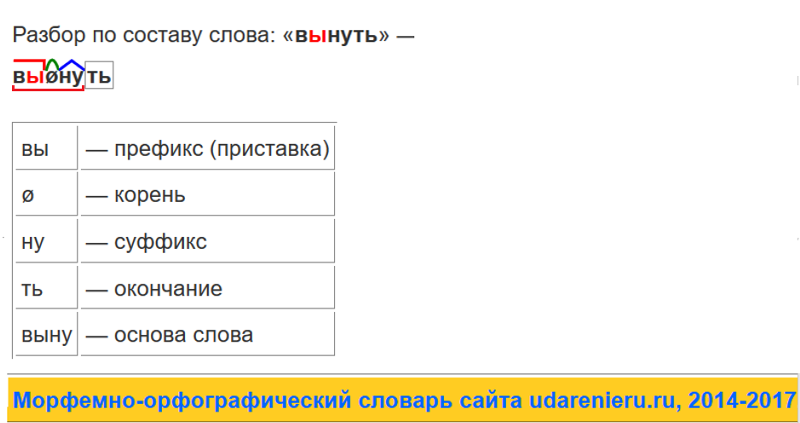
Помол кофе с правильной настройкой также является ключевым моментом — размер измельченных частиц влияет на экстракцию, поэтому важно правильно выбрать этот параметр для вашего метода. У нас есть базовое руководство по измельчению.
Если все остальное не помогает, у вас дома нет хорошей кофемолки или вы не можете правильно набрать свой, попросите своего бариста в кафе Stumptown или другом местном специализированном кафе измельчить его для вас. метод. Определите, какой тип устройства для заваривания вы используете.Если у вас есть кофемолка, используйте этот молотый кофе, чтобы откалибровать кофемолку. Подсказка: нанесение молотого кофе на лист белой бумаги поможет вам действительно сравнить размер частиц.
И, наконец, что касается типа шлифовального станка, то заусенец лучше. Лезвие кофемолки измельчает кофе на кусочки неправильного размера, что приводит к неравномерной экстракции. Мы любим электрические шлифовальные машины Baratza за их качество, обслуживание клиентов и политику ремонта.
Perfect Your Pour.
Первая заливка известна как заливка цветением.Заливка для цветения пропитывает всю землю и в дальнейшем поможет добиться равномерного извлечения. Влейте в кофе примерно вдвое больше воды и осторожно перемешайте. Это должно занять от 30 до 45 секунд.
Вы должны вливать медленно и равномерно по спирали, чтобы все было равномерно. Чайник на гусиной шее действительно поможет вам с точностью — избегайте светлых пятен, идите в сторону темноты.
Закон о чистой воде.
Не используйте воду для приготовления кофе, который вы бы не пили. Чистая вода = чистый кофе.Температура воды должна быть около 205 градусов, или примерно на 30 секунд ниже кипения.
Ratio Test.
Использование постоянного соотношения воды и кофе поможет вам с дозировкой. Потом можно настроить по вкусу. Как правило, мы предлагаем соотношение веса кофе к воде 1:17. Другими словами, для Chemex мы используем 42 грамма кофе и около 700 граммов воды.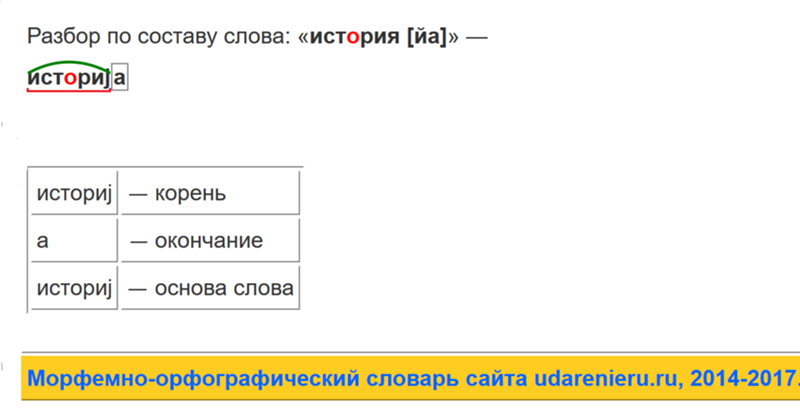
И на последок внесите коррективы! Если у кофе слабый или кислый вкус, отрегулируйте помол, чтобы он стал мельче.Если вкус слишком горький, отрегулируйте помол, чтобы он стал грубее.
Жгучие вопросы по пиву? Мы здесь, чтобы помочь. Ознакомьтесь с нашими полными руководствами по пивоварению или свяжитесь с нами по @stumptowncoffee или [email protected]
Как приготовить кофе
Приготовление отличной чашки кофе требует большого мастерства и внимания к деталям.
Приготовление качественного кофе — это сочетание искусства и науки, основанное на глубоком понимании шести элементов правильной экстракции кофе:
- Правильное соотношение кофе и воды
- Настройки помола
- Способ заваривания / устройство
- Техника заливки
- Качество воды
- Среда фильтрации
При использовании ручного устройства для перелива сварить ужасную чашку кофе так же легко, как сварить отличный. Разница определяется тем, насколько тщательно вы контролируете эти шесть основных элементов пивоварения.
Разница определяется тем, насколько тщательно вы контролируете эти шесть основных элементов пивоварения.
Почему налитый кофе отличается от обычного капельного кофе
Короткий ответ? Это не так.
Подача с проливом — это ручная версия того же процесса, который происходит в любом заварочном устройстве для кофе.
Нет ничего нового или новаторского в методах обливания в целом. Большинство устройств для ручного заваривания, которые стали популярными за последние десять лет, существуют еще до изобретения автоматических домашних кофеварок.
Что делает пивоварение особенным, так это уровень контроля, который он позволяет пивовару.
Там, где автоматические капельные кофеварки обеспечивают высокий уровень однородности процесса заваривания, они, как правило, не позволяют регулировать параметры заваривания в соответствии с различными сортами кофе.
С приходом третьей волны кофейные энтузиасты начали уделять больше внимания тонким различиям вкусовых качеств между разными происхождениями, сортами и методами обработки кофе. Это привело к повышенному спросу на устройства для приготовления кофе, которые позволяют строго контролировать процесс заваривания.
Это привело к повышенному спросу на устройства для приготовления кофе, которые позволяют строго контролировать процесс заваривания.
Ручные заварочные устройства предлагают такой уровень контроля.
Типы устройств для заваривания
Выбор устройства, подходящего для вашего любимого кофе и стиля заваривания, является одним из важнейших элементов процесса заваривания.
Есть два основных метода заваривания вручную. Эти методы отличаются процессом, который они используют для извлечения твердых частиц кофе во время цикла заваривания, и для каждого метода доступно множество устройств.
Гравитационное пивоварение Погружение в пивоварениеГравитационное пивоварение
Устройства для самотечного или капельного заваривания — это устройства, в которых вода добавляется поверх слоя молотого кофе и под действием силы тяжести вытягивается вниз через молотый кофе из нижней части корзины фильтра.
Методы гравитационного заваривания включают:
- Бодум для заливки
- Стандартные домашние кофеварки (например, Mr.
 Coffee)
Coffee) - Классическая капельница Melitta
- Hario V60
- Chemex
- И т. Д. Других вариаций
Коническая корзина для заваривания и бумажные фильтры, используемые в большинстве самотечных пивоварен, делают их подходящими для приготовления легкого, яркого и свежего кофе.
Пивоварение методом погружения
Самым распространенным устройством для заваривания иммерсией является френч-пресс.
В погружном заварочном устройстве вся кофейная гуща находится в контакте со всей водой в течение всего цикла заваривания. Некоторые люди считают, что в результате получается более сладкий и насыщенный кофе, чем в капельном пивоварне. Однако в большинстве случаев причиной этого является отсутствие бумажного фильтра у большинства иммерсионных пивоварен.
Какими бы ни были научные данные, иммерсионные пивовары лучше подходят для сладкого, полнотелого кофе с шоколадным, ореховым и карамельным вкусами.
Шаги по приготовлению наливного кофе
После того, как вы выбрали правильное устройство, подходящее для вашего кофе, вам нужно будет выбрать параметры заваривания и настроить другие элементы правильного заваривания.
1. Фильтр воды
Давно известно, что качество воды жизненно важно для приготовления кофе. Однако в последние несколько лет разговоры о воде при варке кофе перешли не на качество, а на состав.
Вода — важнейший элемент кофе.Заваренная чашка кофе более чем на 98% состоит из воды, поэтому очень важно использовать воду высокого качества.
ПодробнееМинеральное содержание воды может сильно повлиять на параметры заваривания и может резко изменить вкус заваренного кофе.
SCA публикует стандарт качества воды, который поможет вам приступить к набору профиля воды, который соответствует вашим вкусовым предпочтениям и выбору кофе.
2. Выберите среду фильтрации
Используете ли вы капельницу или погружное устройство, фильтр, который вы используете, будет иметь огромное влияние на тело (ощущение во рту) вашего налитого кофе.Металлические фильтры (например, сетчатый фильтр во френч-прессе или некоторые многоразовые конические фильтры) позволят получить тяжелый кофе с большим количеством осадка в чашке.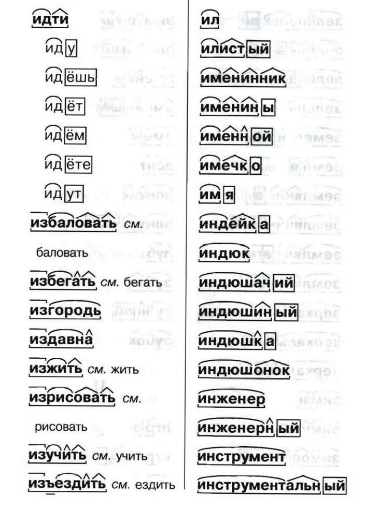
Бумажные фильтры удаляют больше осадка и масел, содержащихся в кофе, в результате получается прозрачный, чистый кофе с профилем вкуса, близким к кислому концу спектра.
3. Набирайте обороты
Правильный уровень помола для вашего налитого кофе зависит от конкретного метода заваривания и устройства, которое вы используете.
Наука о помоле кофе — это глубокая и сложная тема, которая выходит далеко за рамки грубости, но самая важная часть выбора правильного помола — это настройка степени помола.
ПодробнееЧем крупнее помол, тем медленнее будет завариваться кофе.
Более длительное время контакта в устройстве для заваривания в погружении лучше всего работает при более медленной экстракции. По этой причине крупный помол обычно является правильным выбором при заваривании во френч-прессе.
Капельные кофеварки обычно лучше всего работают с более мелким помолом, но особенности сильно зависят от конкретного устройства, которое вы используете, кофе и стиля обжарки.
4. Контролируйте соотношение воды и кофе
Крепость кофе определяется соотношением количества используемого молотого кофе и воды. Больше кофе — крепкий напиток, меньше кофе — слабее.
Ассоциация спешиэлти кофе рекомендует использовать 55 г молотого кофе на литр воды, но это очень общий совет. Соотношение воды и кофе сильно зависит от кофе, устройства и ваших вкусовых предпочтений.
5. Тщательно залейте
В погружной пивоварне техника проста: налейте воду на кофе и подождите.
Однако при приготовлении капельного кофе вы должны контролировать скорость потока, расположение и степень перемешивания, вызываемого при наливании.
ПодробнееЧем больше вы перемещаете кофе в корзине во время разливания, тем быстрее будет завариваться кофе. Если вы не будете тщательно контролировать способ наливания во время заливки, все остальные параметры заваривания станут бессмысленными.
Как работает экстракция кофе — Clive Coffee
Экстракция кофе — это просто процесс растворения молотого кофе в горячей воде, верно? Ну да. Но чтобы получить чашку кофе с идеальным вкусом, к этому прибегает некоторая наука. Соотношение воды и кофе, точность помола, степень обжарки кофе, температура воды и время, в течение которого вода контактирует с кофе, — это лишь некоторые из факторов, которые входят в состав кофе. добыча.
Но чтобы получить чашку кофе с идеальным вкусом, к этому прибегает некоторая наука. Соотношение воды и кофе, точность помола, степень обжарки кофе, температура воды и время, в течение которого вода контактирует с кофе, — это лишь некоторые из факторов, которые входят в состав кофе. добыча.
Если у вас возникли проблемы с приготовлением идеального рюмки или чашки кофе, возможно, вы захотите немного глубже погрузиться в наше руководство о том, как происходит заваривание кофе, и дать вам советы по улучшению экстракции кофе.
Вода: универсальный растворитель Для приготовления любого кофейного напитка берем молотый кофе и добавляем воду. Почему вода? В основном потому, что вода — прекрасный растворитель. На молекулярном уровне он имеет полярное расположение — два атома водорода с положительным электрическим зарядом с одной стороны и один атом кислорода с отрицательным зарядом с другой.Это делает его очень привлекательным для самых разных молекул. Он настолько привлекателен, что разрывает связи других молекул, заставляя их растворяться в воде. Если вы нагреете воду, все ее молекулы начнут быстро перемещаться, что сделает ее еще более эффективным растворителем.
Он настолько привлекателен, что разрывает связи других молекул, заставляя их растворяться в воде. Если вы нагреете воду, все ее молекулы начнут быстро перемещаться, что сделает ее еще более эффективным растворителем.Когда вы смешиваете воду и кофе, вода растворяет в кофе различные ароматические соединения. Но какие молекулы и соединения есть в кофе?
Обжарка кофеДавайте сделаем еще один шаг назад: что такое кофе? Кофейные зерна — это просто обжаренные косточки кофейного фрукта, которые часто называют кофейной вишней.Поскольку мечта каждого семени — вырасти в дерево, семена кофе полны накопленной энергии: особенно сложных сахаров, жиров и кислот. Поскольку семя является частью плодоносящего растения, оно состоит из микроскопических растительных волокон.
Чтобы превратить семена в то, что мы можем использовать для заваривания, мы бросаем их в очень горячую среду, обычно в кофемашину. Тепло жаровни влияет на все компоненты кофейных зерен. Во-первых, тепло испаряет всю влагу, оставшуюся в кофе.По мере того, как влага продолжает покидать семена, растительные волокна, составляющие структуру кофе, становятся сухими, твердыми и ломкими. Если обжарить слишком много, растительные волокна будут продолжать разрушаться, и большая часть масел в кофе выйдет на поверхность и начнет окисляться.
Во-первых, тепло испаряет всю влагу, оставшуюся в кофе.По мере того, как влага продолжает покидать семена, растительные волокна, составляющие структуру кофе, становятся сухими, твердыми и ломкими. Если обжарить слишком много, растительные волокна будут продолжать разрушаться, и большая часть масел в кофе выйдет на поверхность и начнет окисляться.
Тепло жаровни начнет преобразовывать сложные сахара (длинноцепочечные углеводы) в более простые сахара (короткоцепочечные углеводы), что облегчает их вкус. По мере развития жаркого некоторые из этих сахаров начинают карамелизироваться, создавая ореховый карамельный аромат.Если зажарить жаркое слишком далеко, этот сахар карбонизируется, и вкус изменится с сладкого и сложного на жженый и дымный.
По мере увеличения температуры многие кислоты в кофе также разрушаются. Если обжарку прекратить слишком рано, в кофе будет много кислоты. Если оставить обжарку, кислоты в конечном итоге полностью разрушатся, и кофе станет мягким и подгоревшим. Большинство обжарщиков кофе стремятся сбалансировать уровни кислотности, чтобы приготовленный кофе не был ни сильно кислым, ни невероятно мягким.
Большинство обжарщиков кофе стремятся сбалансировать уровни кислотности, чтобы приготовленный кофе не был ни сильно кислым, ни невероятно мягким.
Результат качественной обжарки? Кофейные зерна, которые имеют тщательный баланс масел, фруктовых кислот, простых сахаров и карамелизированных сахаров.
Пивоварение: понимание экстракцииИтак, теперь у нас есть хорошая вода и хороший кофе — все, что вам нужно сделать, это заварить чашку. Практически во всех методах приготовления кофе — будь то эспрессо, наливание, холодное заваривание или французский пресс — общий принцип один и тот же. Возьмите жареный кофе, измельчите его на мелкие кусочки и добавьте воды.Как только вода попадает в кофе, он начинает извлекать ароматические соединения.
Независимо от метода, вода всегда извлекает различные ароматические соединения в указанном порядке: жиры и кислоты, затем сахара и, наконец, растительные волокна. С точки зрения вкуса и тела это выглядит так:
Кислый / Масляный — Сладкий / Сиропистый — Горький / Тонкий
Первые соединения, извлеченные из кофе, — это кислоты и жиры.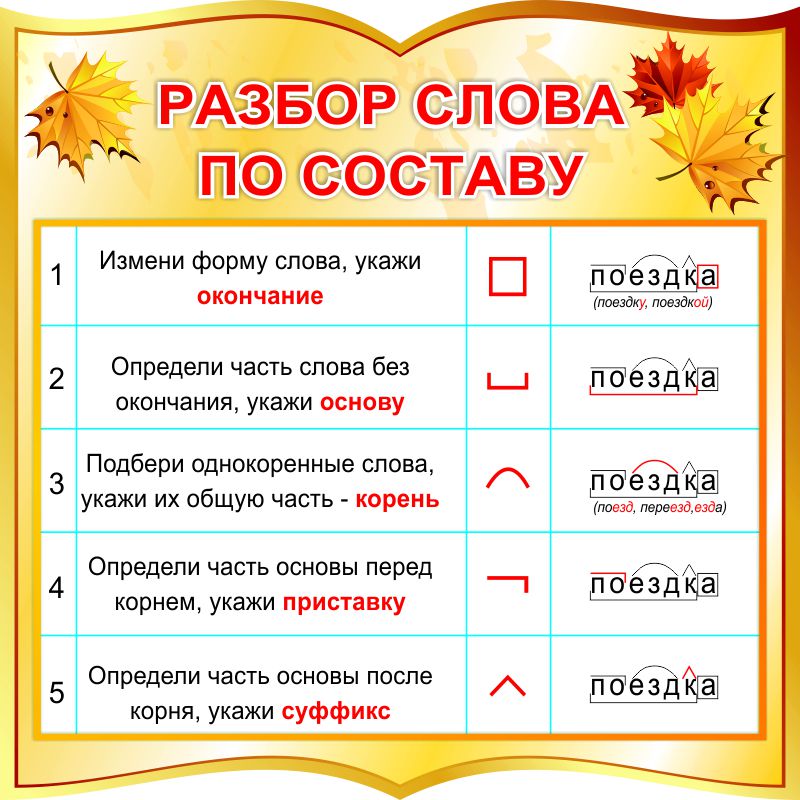 Кислоты, которые придают кислый вкус, являются простейшими соединениями с молекулярной точки зрения, поэтому вода может легко растворить их в жидком кофе.Масла или жиры в кофе, которые добавляют тело, с химической точки зрения не очень просты. Вместо этого они гидрофобны и легко смываются из молотого кофе. Кроме того, на этом этапе извлекаются многие из более легких ароматических веществ, цветочных и фруктовых.
Кислоты, которые придают кислый вкус, являются простейшими соединениями с молекулярной точки зрения, поэтому вода может легко растворить их в жидком кофе.Масла или жиры в кофе, которые добавляют тело, с химической точки зрения не очень просты. Вместо этого они гидрофобны и легко смываются из молотого кофе. Кроме того, на этом этапе извлекаются многие из более легких ароматических веществ, цветочных и фруктовых.
Далее добывается сахар. Даже простые сахара более сложны, чем кислоты. Таким образом, воде требуется больше времени и / или энергии для их полного растворения.
Со временем вода начнет разрушать растительные волокна, которые удерживают молотый кофе.Как и все растительные вещества, в том числе капуста и сельдерей, эти волокна на вкус сухие и горькие.
Источник: Barista Hustle
Когда профессионалы в области кофе пробуют эспрессо или сваренный кофе, мы часто описываем его как чрезмерно или недостаточно экстрагированный. Недоэкстрагированный кофе на вкус кислый или острый.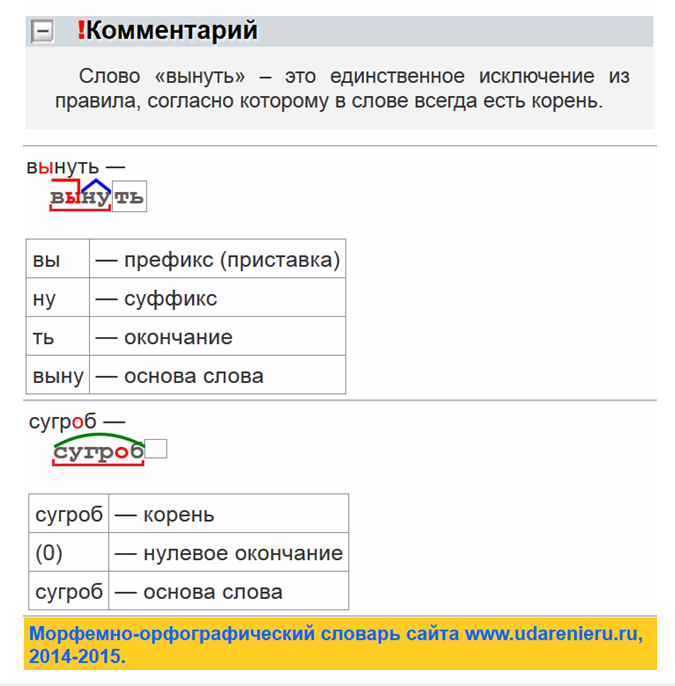 Это связано с тем, что воде не хватило возможности расщепить достаточно сахаров, чтобы сбалансировать их с кислотами из первой части экстракции. Чрезмерно экстрагированный кофе имеет горький и жидкий вкус, почти полый.Это потому, что вода извлекла все доступные сахара и начала расщеплять растительные волокна, из которых состоит кофе.
Это связано с тем, что воде не хватило возможности расщепить достаточно сахаров, чтобы сбалансировать их с кислотами из первой части экстракции. Чрезмерно экстрагированный кофе имеет горький и жидкий вкус, почти полый.Это потому, что вода извлекла все доступные сахара и начала расщеплять растительные волокна, из которых состоит кофе.
Шот эспрессо определяется не только качеством его приготовления; не менее важна крепость напитка. Когда мы говорим «сила», мы не имеем в виду содержание кофеина. В кофе крепость связана с количеством растворенных в напитке соединений.
Фильтрованный кофе содержит примерно 1-2% растворенных кофейных соединений; остальные 98-99% — это вода.Эспрессо — гораздо более концентрированный напиток: он состоит из 7-12% растворенных веществ и 88-93% воды.
Крепость кофе во многом зависит от соотношения молотого кофе и воды для заваривания. Если использовать слишком мало воды, ваш кофе будет мутным и подавляющим.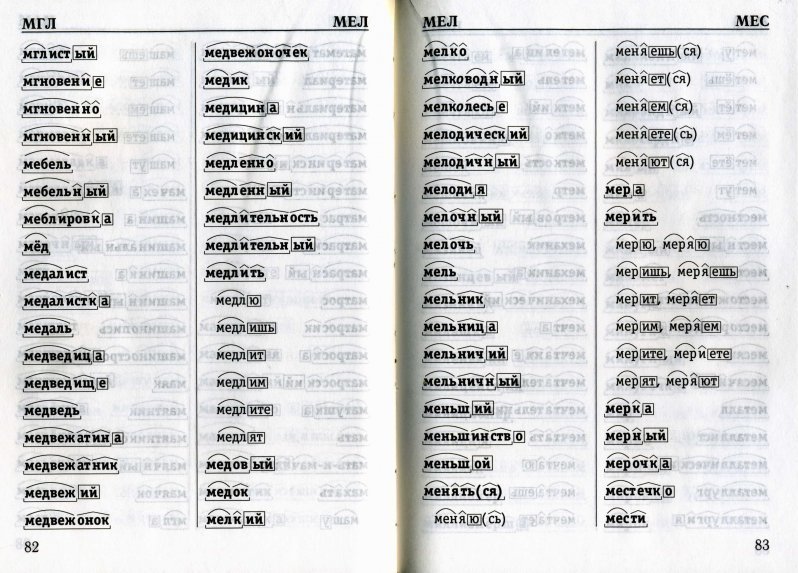 Если использовать слишком много воды, кофе станет жидким и водянистым.
Если использовать слишком много воды, кофе станет жидким и водянистым.
Важно понимать, что сила имеет сильное отношение к добыче. Если для увеличения крепости кофе вы используете меньше воды, воде будет труднее извлечь все желаемые ароматы.По этой причине мы рекомендуем найти соотношение, обеспечивающее крепость кофе, который вам нравится, прежде чем работать над улучшением экстракции. Различные методы заваривания кофе также будут влиять на вкус вашего кофе, так что примите во внимание ваше заварочное устройство или оборудование.
Крепость вашего кофе также будет определять, насколько легко почувствовать различные ароматы. Чем крепче напиток, тем сложнее будет разобрать отдельные ароматы. Для справки: подумайте о разнице между молочным коктейлем и холодным чаем.Молочный коктейль — насыщенный, сладкий и простой, тогда как холодный чай может быть выразительным, ароматным и отчетливым.
Если вы пьете много молока и напитков эспрессо, обычно рекомендуется выпить более крепкий эспрессо, чтобы перебить молоко.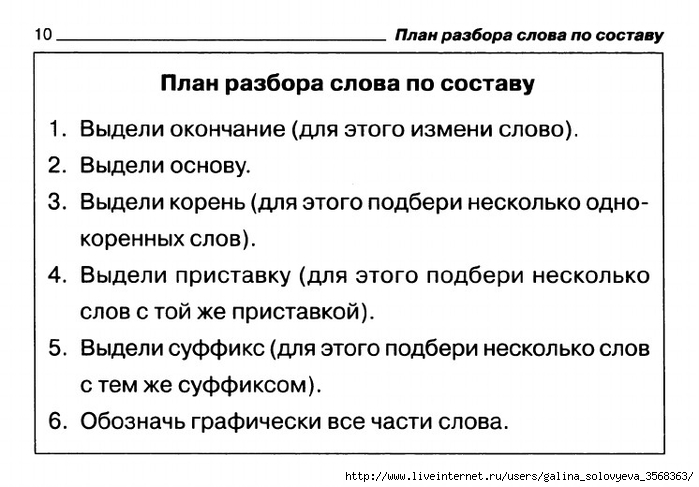 Вот почему мы рекомендуем ристретто или ограниченную порцию для капучино или латте. В этих шотах обычно используется соотношение 1: 1 или 1: 1,5, что означает 1 грамм молотого кофе на каждые 1,5 грамма жидкого эспрессо.
Вот почему мы рекомендуем ристретто или ограниченную порцию для капучино или латте. В этих шотах обычно используется соотношение 1: 1 или 1: 1,5, что означает 1 грамм молотого кофе на каждые 1,5 грамма жидкого эспрессо.
Если вы хотите получить по-настоящему четкие, отчетливые порции эспрессо для питья отдельно или в небольших американо, вам понадобится большее соотношение.Мы рекомендуем соотношение 1: 2 (1 грамм кофе на каждые 2 грамма жидкого эспрессо).
Набери свой кофеКак только вы узнаете, что у вас есть целевое соотношение, пора отрегулировать помол, чтобы добиться идеальной экстракции. Если ваши шоты действительно кислые, вы захотите выжать из кофе больше. Самый простой способ сделать это — отрегулировать помол более тонко и убедиться, что утрамбовка ровная и не вызывает расслоения. Это будет иметь два эффекта:
- более мелкие частицы замедлят поток воды через кофе, давая ему больше времени, чтобы вытянуть сладость;
- : более мелкие частицы будут иметь большую открытую поверхность, что облегчит попадание воды в кофе.

Если ваши шоты действительно безвкусные и горькие, вы захотите меньше извлекать из кофе. Опять же, самый простой способ — отрегулировать уровень помола — на этот раз вы сделаете его более грубым. Посмотрите, как набрать номер в кофемолке для эспрессо, чтобы узнать больше!
Pour Over Coffee Drip Brewing Guide
Background
Компания Blue Bottle была основана Джеймсом Фриманом в 2002 году с простой, но революционной идеей: варить кофе на заказ, используя метод наливания.
Ритуал обливания похож на медитацию: на вашем пути нет машины, нет мигающих зеленых огней, нет электрических шнуров. Только вы и несколько простых инструментов. Если вы никогда раньше не пробовали наливать воду, последняя чашка напоминает чашку из капельной кофеварки, но заметно более нежная и сложная.
Если вы знакомы с этим методом, мы приглашаем вас попробовать нашу версию. Поддается мастерству как с первой попытки, так и с сотой. Найдите несколько минут, чтобы замедлиться: понаблюдайте за цветением — это набухание кофейной гущи после первой заливки и почувствуйте первые следы пара, выпитого кофе. Обратите внимание, как скорость потока и спираль каждой разливки могут изменить вкусы в последней чашке. Мы усовершенствовали наш метод за двадцать лет навязчивой работы и с гордостью делимся им здесь.
Обратите внимание, как скорость потока и спираль каждой разливки могут изменить вкусы в последней чашке. Мы усовершенствовали наш метод за двадцать лет навязчивой работы и с гордостью делимся им здесь.
В течение ограниченного времени мы получаем капельницу плюс фильтры, когда вы подписываетесь на подписку на кофе.
Шаг 1
Доведите до кипения не менее 600 граммов (20 унций) воды.
Шаг 2
Измельчите кофе до крупности, напоминающей морскую соль. Для купажей мы рекомендуем 30 граммов кофе.Чтобы насладиться тонким вкусом слегка обжаренного кофе одного происхождения, мы рекомендуем меньше кофе: 22 грамма на каждые 350 граммов воды.
Шаг 3
Поместите фильтр в капельницу.
Если вы используете специальный фильтр Blue Bottle, его не нужно предварительно смачивать. Если вы используете фильтр №2 с другой капельницей, мы рекомендуем смочить фильтр горячей водой, а затем слить воду, прежде чем продолжить заваривание.
Step 4
Добавьте молотый кофе в фильтр и осторожно постучите по нему, чтобы выровнять поверхность молотого кофе.Поместите пивовар в графин или чашку, поместите всю установку на цифровые весы и установите нулевое значение.
Шаг 5
Всего для этого приготовления кофе будет четыре наливки. Это первое и самое волшебное, потому что именно тогда вы увидите, как кофе «расцветает». Когда горячая вода сначала попадает на землю, выделяется Co2, создавая эффект цветения — земля поднимается на в массе на .
Запустить таймер. Начните медленно поливать кофе водой, начиная с внешнего края и двигаясь по устойчивой спирали к центру кофейной гущи.Прекратите лить, когда весы достигнут 60 граммов. Убедитесь, что вся гуща пропитана, даже если вам нужно добавить немного воды. Заливка должна занять около 15 секунд. Дайте кофе еще 30 секунд, чтобы он капал, прежде чем переходить ко второй разливке.
Step 6
Начиная с центра гущи, поливайте равномерной спиралью к внешнему краю, а затем обратно к центру.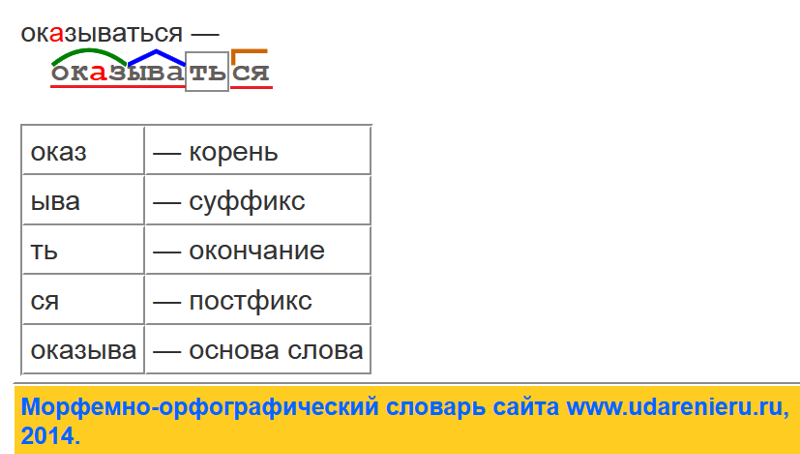 Обязательно вылейте масло до самого края, чтобы на нем не было неровностей. Это помогает предотвратить попадание гущи внутрь и ее удаление из остальной части добычи.Добавьте примерно 90 граммов, доведя общее количество до 150 граммов. Цель этой заливки — утопить всю гущу на поверхности кровати. Это создает легкую турбулентность, которая «перемешивает» кофе, позволяя воде более равномерно извлекать гущу. Подождите 45–65 секунд.
Обязательно вылейте масло до самого края, чтобы на нем не было неровностей. Это помогает предотвратить попадание гущи внутрь и ее удаление из остальной части добычи.Добавьте примерно 90 граммов, доведя общее количество до 150 граммов. Цель этой заливки — утопить всю гущу на поверхности кровати. Это создает легкую турбулентность, которая «перемешивает» кофе, позволяя воде более равномерно извлекать гущу. Подождите 45–65 секунд.
Шаг 7
По мере того, как смесь воды и кофе из второй заливки падает на дно фильтра, приближаясь к уровню помола, налейте еще 100 граммов воды, используя ту же схему, что и при второй заливке. .Это дает общее количество до 250 граммов и должно занять 15–20 секунд.
Step 8
Когда вода и кофе из третьей заливки упадут на дно фильтра, завершите четвертую и последнюю заливку. Добавьте 100 граммов, доведя до 350 граммов воды. Заливка должна занять 20 секунд.
Проблемы и решения (часть 3) — Khymos
Hario V60 — один из самых популярных держателей фильтров для пивоварения. Мой сделан из полипропилена (ПП), и ниже вы можете прочитать, почему я предпочитаю его стеклу или металлу.
Мой сделан из полипропилена (ПП), и ниже вы можете прочитать, почему я предпочитаю его стеклу или металлу. В предыдущем сообщении в блоге этой серии я рассмотрел химические соединения, присутствующие в чашке кофе, и то, как их концентрации варьируются в пределах 9 порядков. Каждое из соединений, присутствующих в кофе, будет иметь определенную растворимость и степень экстракции. Звучит плохо, но на самом деле это хорошо, потому что обжаренный кофе не обязательно «идеален», даже если он обжарен до совершенства. Если бы все соединения экстрагировались с одинаковой скоростью, не было бы места для творчества и вариаций при приготовлении кофе.К счастью, это не так. Если цель экстракции кофе состоит в том, чтобы максимально точно отражал растворимую часть кофейного зерна , вам следует измельчить как можно более мелко и долго настаивать, чтобы гарантировать, что также экстрагируются более медленные экстракционные соединения. Чтобы ускорить процесс, вы также можете вскипятить кофе во время экстракции.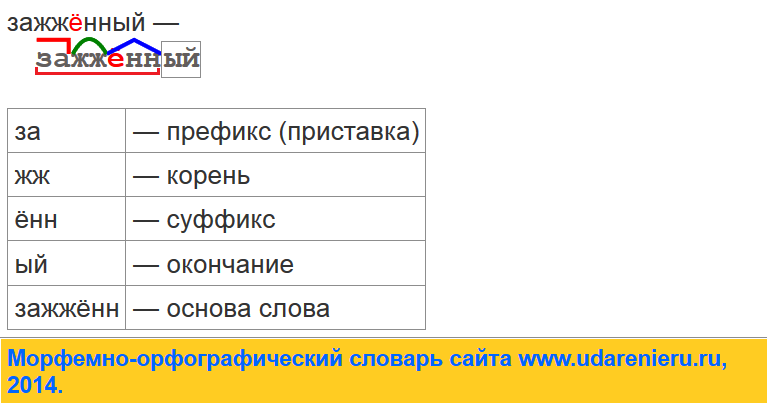 Результат будет похож на кофе по-турецки, сваренный без добавления сахара или специй. Выход при извлечении приблизится к 30%. Результат может быть крепким и вкусным, но это не обязательно лучший кофе, который вы можете сварить.Для этого вам, скорее всего, понадобится выборочная экстракция . Я иногда вижу термин «равномерная экстракция», используемый для описания хорошего кофе, но с химической точки зрения вы действительно стремитесь к неравномерной экстракции , при которой соединения не были извлечены в той же степени. Лучший способ добиться этого — использовать технику заливки или перколяции (в дальнейшем я буду придерживаться термина «заливка»). Перколяцию в этом контексте, кстати, не следует путать с перколятором для кофе, где конвекция заставляет нагретый кофе подниматься в центральной трубе, чтобы он мог стекать обратно через кофейный слой.Первые модели были изобретены более 200 лет назад, а обновленные версии стали очень популярными в 70-х годах.
Результат будет похож на кофе по-турецки, сваренный без добавления сахара или специй. Выход при извлечении приблизится к 30%. Результат может быть крепким и вкусным, но это не обязательно лучший кофе, который вы можете сварить.Для этого вам, скорее всего, понадобится выборочная экстракция . Я иногда вижу термин «равномерная экстракция», используемый для описания хорошего кофе, но с химической точки зрения вы действительно стремитесь к неравномерной экстракции , при которой соединения не были извлечены в той же степени. Лучший способ добиться этого — использовать технику заливки или перколяции (в дальнейшем я буду придерживаться термина «заливка»). Перколяцию в этом контексте, кстати, не следует путать с перколятором для кофе, где конвекция заставляет нагретый кофе подниматься в центральной трубе, чтобы он мог стекать обратно через кофейный слой.Первые модели были изобретены более 200 лет назад, а обновленные версии стали очень популярными в 70-х годах.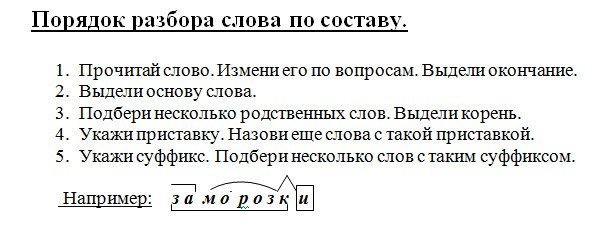
Заливка кофе может показаться обманчиво простым: вы наливаете горячую воду на молотый кофе и позволяете заварке капать в чашку путем гравитационной фильтрации через фильтр. Если вы подумаете об этом, хотя , есть удивительно много параметров, которые вы можете настроить для . В части 1 я обсуждал, как соотношение заваривания, размер помола / гранулометрический состав, состав и температура воды, фильтрующий материал и размер пор влияют на конечный результат.Но это еще не все — гораздо больше! На конечный результат также влияет следующее:
- Геометрия и размер держателя фильтра
- , как быстро и с какими интервалами добавляется вода (это включает в себя фазу цветения, когда кофейная гуща может немного набухнуть и где может выделяться захваченный CO 2 )
- степень перемешивания (механическое с помощью ложки, легкое вращение или достаточно быстрое наливание воды для создания турбулентности)
- Отток кофе (регулируется клапаном?)
- , в какой степени вода проталкивается через весь слой кофе или ей позволяется миновать кофейную гущу, либо через каналы, либо просто выходя через фильтровальную бумагу как можно скорее.

Дополнительная сложность возникает из-за того, что многие параметры коррелированы .В таблице ниже я попытался указать корреляции. Я классифицировал параметры, на которые вы можете напрямую влиять, как независимые. Остальные относятся к категории зависимых.
В качестве примера мы можем рассмотреть размер помола и гранулометрический состав (PSD). Наиболее важным эффектом является то, что общая доступная площадь поверхности влияет на экстракцию. Более мелкие частицы замедляют поток и тем самым увеличивают время контакта (и, следовательно, улучшают экстракцию). Также существует риск засорения фильтра, что может еще больше замедлить отток.Есть основания полагать, что размер измельчения и PSD могут влиять на ченнелинг, но как именно, для меня не очевидно. При мелком помоле и медленном потоке любая вода, стоящая над кофейным слоем, может с таким же успехом пройти через фильтр и обойти весь фильтрующий слой, потому что вода — ленивая .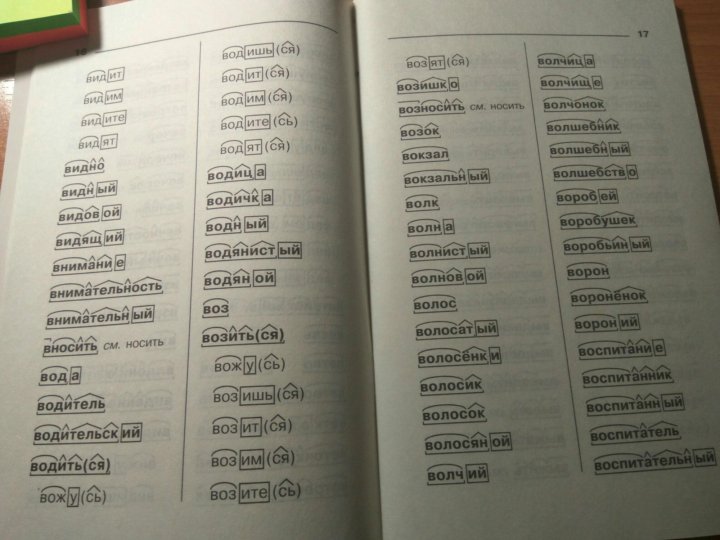 Независимо от того, насколько вы хотите, чтобы вода следовала определенному пути, чтобы растворить и извлечь все полезные вещества из кофейных зерен, она всегда будет идти по пути наименьшего сопротивления.Объем байпаса будет увеличиваться с более мелким помолом и держателем фильтра с рисунком, который уменьшает контакт с фильтром, тем самым увеличивая скорость потока воды через стороны фильтра.
Независимо от того, насколько вы хотите, чтобы вода следовала определенному пути, чтобы растворить и извлечь все полезные вещества из кофейных зерен, она всегда будет идти по пути наименьшего сопротивления.Объем байпаса будет увеличиваться с более мелким помолом и держателем фильтра с рисунком, который уменьшает контакт с фильтром, тем самым увеличивая скорость потока воды через стороны фильтра.
Мы могли бы продолжить то же самое для всех корреляций, показанных в таблице выше, но я пощажу вас на этом. Надеюсь, вы согласитесь со мной в том, что на самом деле заваривание пива — чрезвычайно сложная система, которую нужно точно описать и контролировать. И я думаю, что бесчисленные видеоролики на YouTube о методах пивоварения свидетельствуют об этом.Тем не менее, метод обливания популярен, потому что он дает как профессиональным, так и домашним бариста возможность контролировать конечный результат.
Обратной стороной этой сложности является то, что вносит непреднамеренные и случайные изменения, которые, в свою очередь, могут привести к мифам о приготовлении кофе . Еще один эффект заключается в том, что два человека, следующие одному и тому же «рецепту», не обязательно получат одинаковый кофе просто потому, что большинство рецептов кофе не описывают все параметры, упомянутые выше, с достаточной детализацией.
Еще один эффект заключается в том, что два человека, следующие одному и тому же «рецепту», не обязательно получат одинаковый кофе просто потому, что большинство рецептов кофе не описывают все параметры, упомянутые выше, с достаточной детализацией.
Я слишком много думаю об этом? Может быть, а может и нет. Когда я начал читать о капельном кофе, я был поражен количеством идей и инноваций в области капельного кофе. Оказывается, о кофеварках думают уже очень много лет! Достаточно взглянуть на картинку ниже из книги «Все о кофе», изданной в 1922 году.
Иллюстрация из книги В. А. Укерса «Все о кофе», 1922 г. Затем из любопытства я начал собирать и систематизировать некоторые кофеварки, доступные сегодня, для заваривания.Бесконечный список (см. Таблицу ниже) на первый взгляд может показаться глупым, но многие небольшие различия на самом деле существуют не случайно. Изобретатели , стоящие за многими из этих устройств, действительно пытаются развязать кофейный узел . Я записал следующие данные о кофеварках:
Я записал следующие данные о кофеварках:
Материал и изоляция: При заваривании кофе необходимо поддерживать относительно высокую температуру. Металл — это плохо, поскольку он является хорошим проводником тепла, если только у вас нет держателя фильтра с двойными стенками с вакуумом, такого как Stagg X / XF, или там так много металла, что тепловая масса значительна по сравнению с объемом воды, используемой для пивоварения ( единственный пример, который я действительно могу придумать в этой категории, — это цельнометаллический портфильтр для эспрессо).Держатели фильтров с вакуумной изоляцией также выпускаются из стекла, но, на мой взгляд, держатели фильтров подвергаются таким нагрузкам, что стекло кажется слишком хрупким — рано или поздно оно сломается. Лично я бы предпочел пластик (например, красный Hario V60 на верхнем рисунке) или керамический из-за стоимости, ограниченной теплопотери и прочности.
Форма / геометрия: Многие знакомы с держателем фильтра трапециевидной формы Melitta. В последние годы стали популярны конусообразные фильтры, такие как Hario V60, а также держатели фильтров с плоским дном, такие как Kalita Wave, в которых используются фильтры складчатой / W-образной формы.Форма и размер кофейной кровати различаются в зависимости от конструкции, и это влияет на то, как вода течет через кофе. Высокая / узкая цилиндрическая кофейная кровать обеспечит хороший контакт между кофейной гущей и водой, но поток будет медленным. С другой стороны, плоская кофейная кровать обеспечивает более быстрый поток, но вода может быстро найти легкий выход (канал).
В последние годы стали популярны конусообразные фильтры, такие как Hario V60, а также держатели фильтров с плоским дном, такие как Kalita Wave, в которых используются фильтры складчатой / W-образной формы.Форма и размер кофейной кровати различаются в зависимости от конструкции, и это влияет на то, как вода течет через кофе. Высокая / узкая цилиндрическая кофейная кровать обеспечит хороший контакт между кофейной гущей и водой, но поток будет медленным. С другой стороны, плоская кофейная кровать обеспечивает более быстрый поток, но вода может быстро найти легкий выход (канал).
Внутренняя поверхность стены: Если простой / гладкий фильтр используется в держателе фильтра конической или конической формы, существует высокий риск того, что влажная бумага будет прилипать к поверхности, если поверхность плоская, тем самым эффективно блокируя поток.Ярким примером этого является Chemex. Поначалу это может показаться недостатком, но преимущество состоит в том, что по существу нет байпаса, поскольку поток бумаги по бокам заблокирован. В большинстве других установок используется либо гофрированная / сложенная фильтровальная бумага, либо выступы или узор, позволяющий потоку кофе проходить через фильтр, даже когда он прилипает к поверхности.
В большинстве других установок используется либо гофрированная / сложенная фильтровальная бумага, либо выступы или узор, позволяющий потоку кофе проходить через фильтр, даже когда он прилипает к поверхности.
Тип фильтра: Некоторые пивовары поставляются с металлическими фильтрами прямо из коробки, но наиболее распространенным фильтрующим материалом на сегодняшний день является бумага.Цилиндрические пивоварни, такие как Aeropress, обычно имеют просто диск из фильтровальной бумаги. Держатели фильтров конической и трапециевидной формы обычно имеют фильтровальную бумагу, адаптированную к форме держателя фильтра. Эти фильтры, как правило, тоже простые / развернутые. Проблема с фильтровальной бумагой заключается в том, что мелкие частицы кофе могут забивать их, что приводит к полной остановке фильтрации. Один из способов обойти это — увеличить площадь поверхности, и это можно сделать с помощью рифленого или W-образного фильтра. Фильтр Kalita Wave, пожалуй, самый известный пример использования фильтровальной бумаги W-образной формы.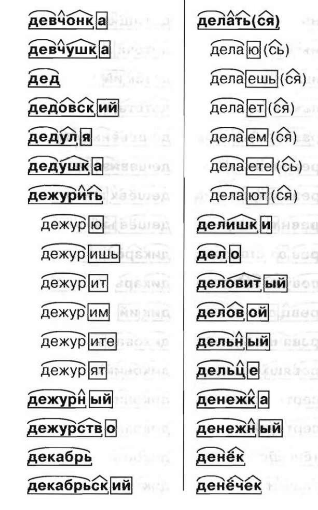 В химических лабораториях рифленая фильтровальная бумага постоянно используется для быстрой гравитационной фильтрации в стеклянных конических воронках. Пивоварня Karlsbader — исключение из всего вышеперечисленного, поскольку в качестве фильтра используется только крупнозернистая керамическая решетка.
В химических лабораториях рифленая фильтровальная бумага постоянно используется для быстрой гравитационной фильтрации в стеклянных конических воронках. Пивоварня Karlsbader — исключение из всего вышеперечисленного, поскольку в качестве фильтра используется только крупнозернистая керамическая решетка.
Регулировка подачи: В самых простых конструкциях вы просто наливаете воду на верхнюю часть кофейного ложа. Недостатком является то, что это нарушает кофейный слой и перераспределяет гущу, что может создать пути с меньшим сопротивлением (образование каналов).Этого можно избежать, контролируя приток. Один из способов — уменьшить высоту заливки и диаметр патрубка. Характерные чайники на гусиной шее были специально разработаны для этой цели. Более надежным решением может быть использование специального распределителя воды поверх держателя фильтра, такого как Gabi Dripmaster B или Melodrip. В нем есть несколько небольших отверстий, которые обеспечивают медленный равномерный поток воды на кофейную кровать. Это обеспечит идеально ровную кофейную кровать. Однако недостатком многих водораспределителей (особенно открытых) является потеря температуры.
Это обеспечит идеально ровную кофейную кровать. Однако недостатком многих водораспределителей (особенно открытых) является потеря температуры.
Выходные отверстия и управление выходом: Помимо размера помола, геометрии / поверхности и фильтровальной бумаги, выходные отверстия также влияют на общую скорость потока. Держатели фильтров, предназначенные для максимального увеличения потока, имеют одно большое открытое отверстие в сочетании с отмеченными гребнями или узорчатой поверхностью. Меньшее / меньшее количество отверстий и ровная поверхность, которая позволяет фильтровальной бумаге прилипать к поверхности, могут способствовать уменьшению потока. Некоторые держатели фильтра имеют дополнительный клапан, который можно использовать для ограничения или даже полного перекрытия потока.Это хорошая идея, поскольку она позволяет лучше контролировать время экстракции. Запуск экстракции с закрытым клапаном позволяет выполнить начальную фазу погружения или замачивания, за которой следует заключительная фаза опускания или фаза перколяции. Самый известный пример — это, вероятно, пивовар Clever. Запорный клапан также упрощает масштабирование рецепта, поскольку меньшее количество кофе неизбежно приводит к более быстрому потоку. Вы, конечно, можете помолоть более мелкий, но тогда вам, возможно, также придется отрегулировать соотношение заваривания, что опять же влияет на поток.Видите, почему заливка пивоварения сложна? Клапан решает эту проблему, позволяя получить желаемое время контакта.
Самый известный пример — это, вероятно, пивовар Clever. Запорный клапан также упрощает масштабирование рецепта, поскольку меньшее количество кофе неизбежно приводит к более быстрому потоку. Вы, конечно, можете помолоть более мелкий, но тогда вам, возможно, также придется отрегулировать соотношение заваривания, что опять же влияет на поток.Видите, почему заливка пивоварения сложна? Клапан решает эту проблему, позволяя получить желаемое время контакта.
Байпас: Вода, обтекающая кофейную подушку, не участвует в экстракции, а служит только для разбавления кофе. Это нормально, если в противном случае кофе был бы слишком крепким, но обычно вам следует избегать или как можно больше уменьшить байпас. Это также то, к чему пришел Джонатан Ганье в своем недавнем сообщении в блоге об оптимальном перколяционном пивоварении.Обычная фильтровальная бумага, прилипшая к гладкой поверхности держателя фильтра, — хороший способ уменьшить или даже полностью отключить байпас.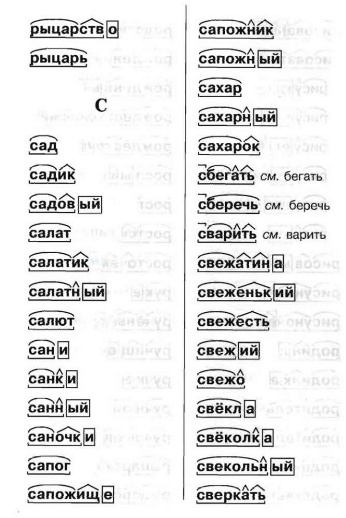 Скорость добавления воды также влияет на байпас. Вы можете свести к минимуму байпас, добавляя воду так медленно, чтобы она не стояла над кофейной подушкой. Если вода стоит высоко над кофейной подушкой, проще всего выйти через боковые стенки, а не через кофейную кровать. Гребни или узорчатая поверхность на держателе фильтра, а также рифленая / сложенная бумага также будут способствовать этому обходу.Я хочу сказать, что многие кофеварки спроектированы с возможностью байпаса, поскольку это простой способ обеспечить определенный поток и избежать засорения. Это делает кофеварку немного снисходительной, если слишком много штрафов. Недостаток в том, что байпас неконтролируемый. Бывает, но в какой степени наблюдать непросто. Лучший способ полностью избежать обхода — использовать держатель фильтра, в котором весь фильтр находится под кофе. С точки зрения экстракции я бы сказал, что, насколько это возможно, только кофе должен ограничивать поток воды , а не оборудование (исключение составляют капельницы с двухпозиционным клапаном).
Скорость добавления воды также влияет на байпас. Вы можете свести к минимуму байпас, добавляя воду так медленно, чтобы она не стояла над кофейной подушкой. Если вода стоит высоко над кофейной подушкой, проще всего выйти через боковые стенки, а не через кофейную кровать. Гребни или узорчатая поверхность на держателе фильтра, а также рифленая / сложенная бумага также будут способствовать этому обходу.Я хочу сказать, что многие кофеварки спроектированы с возможностью байпаса, поскольку это простой способ обеспечить определенный поток и избежать засорения. Это делает кофеварку немного снисходительной, если слишком много штрафов. Недостаток в том, что байпас неконтролируемый. Бывает, но в какой степени наблюдать непросто. Лучший способ полностью избежать обхода — использовать держатель фильтра, в котором весь фильтр находится под кофе. С точки зрения экстракции я бы сказал, что, насколько это возможно, только кофе должен ограничивать поток воды , а не оборудование (исключение составляют капельницы с двухпозиционным клапаном). Что меня озадачивает, так это то, что на рынке больше нет цилиндрических держателей фильтров с плоским фильтром, расположенным полностью под кофейным слоем. Самым известным примером по-прежнему является Aeropress, но есть и другие достойные внимания примеры: Delter, Tricolate, Büchner funnel или Proper и вьетнамский Phin — и это лишь некоторые из них). В таблице ниже я провел быструю оценку различных держателей фильтров и того, допускают ли они какой-либо значительный обход или нет.
Что меня озадачивает, так это то, что на рынке больше нет цилиндрических держателей фильтров с плоским фильтром, расположенным полностью под кофейным слоем. Самым известным примером по-прежнему является Aeropress, но есть и другие достойные внимания примеры: Delter, Tricolate, Büchner funnel или Proper и вьетнамский Phin — и это лишь некоторые из них). В таблице ниже я провел быструю оценку различных держателей фильтров и того, допускают ли они какой-либо значительный обход или нет.
Большая часть оборудования, перечисленного в таблице ниже, предназначена для наливания кофе, но для сравнения я также включил некоторые другие распространенные кофеварки.Щелкните заголовки, чтобы отсортировать таблицу по разным столбцам. На мобильных устройствах может быть проще просматривать таблицу как статическое изображение.
Если на мгновение оставить в стороне «идеальную» экстракцию и проблемы, связанные с заливкой кофе: чего еще мы хотели бы от кофеварки и метода приготовления кофе? Да, в самом деле! Я бы поставил повторяемость на первое место в моем списке.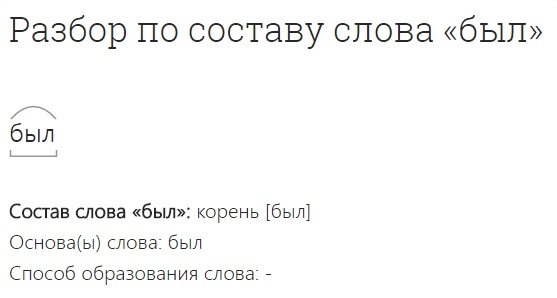 Надежный метод, не требующий особого внимания. Здесь на сцену выходит пивоварение с погружением.Что мне как химику нравится в методе иммерсионного пивоварения, так это то, что это надежный метод. Поделитесь рецептом с двумя людьми, и они на самом деле приготовят очень похожий кофе. Это также метод, который не требует от меня постоянного внимания.
Надежный метод, не требующий особого внимания. Здесь на сцену выходит пивоварение с погружением.Что мне как химику нравится в методе иммерсионного пивоварения, так это то, что это надежный метод. Поделитесь рецептом с двумя людьми, и они на самом деле приготовят очень похожий кофе. Это также метод, который не требует от меня постоянного внимания.
При заваривании погружением кофейная гуща замачивается в воде на определенное время. Вся вода обычно добавляется сразу. Суспензию сначала перемешивают, чтобы избавиться от пузырьков газа. По прошествии определенного времени полученный кофейный напиток отделяется от гущи фильтрацией.Фильтрация под давлением является наиболее распространенной и включает такие примеры, как френч-пресс (и аэропресс при использовании перевернутого метода). Преимущество фильтрации под давлением заключается в том, что время заваривания можно контролировать более или менее независимо от размера помола. То, как долго вы оставляете землю для экстракции водой, переводится в заданное количество общего растворенного твердого вещества (TDS) и выход экстракции (EY).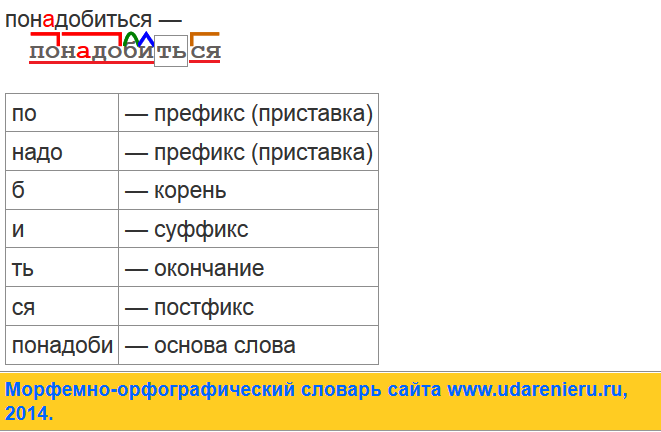 И TDS, и EY со временем увеличатся и, в конечном итоге, выровняются. В какой-то момент вы приблизитесь к равновесию между заваркой кофе и кофейной гущей.Это когда экстрагированный кофе начинает напоминать состав растворимой части кофейного зерна. Однако размер помола все еще намного крупнее, чем при использовании техники «извлечения всего», о которой я упоминал в начале, а температура при заваривании погружением быстро опускается ниже 90 ° C. Из-за этого даже заваривание погружением в некотором смысле избирательно, и чаще всего из него получается чудесная чашка кофе! Изменяя время экстракции, а также играя с размером помола и соотношением заваривания, становится возможным еще больше вариаций.
И TDS, и EY со временем увеличатся и, в конечном итоге, выровняются. В какой-то момент вы приблизитесь к равновесию между заваркой кофе и кофейной гущей.Это когда экстрагированный кофе начинает напоминать состав растворимой части кофейного зерна. Однако размер помола все еще намного крупнее, чем при использовании техники «извлечения всего», о которой я упоминал в начале, а температура при заваривании погружением быстро опускается ниже 90 ° C. Из-за этого даже заваривание погружением в некотором смысле избирательно, и чаще всего из него получается чудесная чашка кофе! Изменяя время экстракции, а также играя с размером помола и соотношением заваривания, становится возможным еще больше вариаций.
Френч-пресс отличается относительно открытым сетчатым фильтром. Значительное количество мелких частиц попадет в вашу чашку и придаст напитку консистенцию и консистенцию и даже оставит осадок на дне чашки. Попробуйте дотронуться до осадка и обратите внимание, как кончики ваших пальцев чувствуют мельчайшие частицы.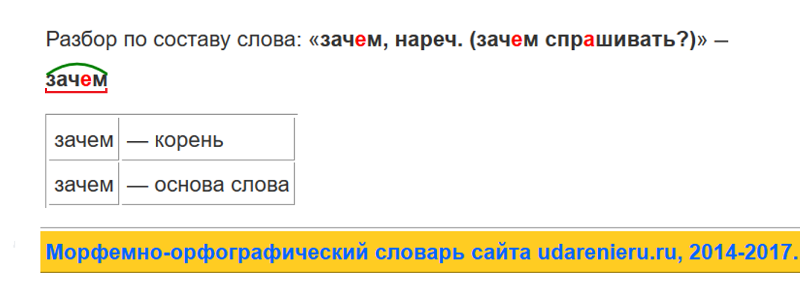 Тогда учтите, что наш язык еще более чувствителен при обнаружении частиц! Продолжительное извлечение никогда не отделяемой мелочи также может вызвать некоторую нежелательную горечь.Для более четкого и чистого вкуса кофе во френч-прессе можно профильтровать через бумажный фильтр. Это удаляет мелкие частицы и даже некоторые масла. Я очень рекомендую вам попробовать это — хотя бы ради эксперимента! Тем не менее, иммерсионный кофе может быть немного приглушенным, даже если его профильтровать.
Тогда учтите, что наш язык еще более чувствителен при обнаружении частиц! Продолжительное извлечение никогда не отделяемой мелочи также может вызвать некоторую нежелательную горечь.Для более четкого и чистого вкуса кофе во френч-прессе можно профильтровать через бумажный фильтр. Это удаляет мелкие частицы и даже некоторые масла. Я очень рекомендую вам попробовать это — хотя бы ради эксперимента! Тем не менее, иммерсионный кофе может быть немного приглушенным, даже если его профильтровать.
Так что же нам остается? Перелить пиво — это хорошо, но сложно. Пивоварение методом погружения надежно, но не идеально. Может быть, впечатляющая сборка Гейла Беттичера из фильма «Во все тяжкие» (S3: E6 «Закат») — лучший способ извлечения кофе? Нет, но клип, в котором он объясняет свое извлечение кофе Уолтеру Уайту , действительно отражает суть того, чего мы все жаждем: самая лучшая чашка кофе, которую мы когда-либо пробовали, ! В следующей части этой серии о кофе я поделюсь некоторыми новыми идеями, которые, надеюсь, могут приблизить нас.
Предыдущие записи в серии кофе:
Чудеса экстракции: Кофе (часть 1)
Что в чашке кофе? (часть 2)
Глубоко в движении: глубокое обучение для анализа настроений Этот веб-сайт предоставляет живую демонстрацию для прогнозирования настроения обзоров фильмов.
Большинство систем прогнозирования настроений работают, просто рассматривая слова по отдельности, выставляя положительные баллы за положительные слова и отрицательные баллы за отрицательные слова, а затем суммируя эти баллы.Таким образом, порядок слов игнорируется, и важная информация теряется.
Напротив, наша новая модель глубокого обучения фактически создает представление целых предложений на основе структуры предложения. Этот фильм на самом деле не был ни таким смешным, ни супер остроумным. Технология, лежащая в основе этой демонстрации, основана на новом типе рекурсивной нейронной сети , которая строится на основе грамматических структур. Вы также можете просмотреть Stanford Sentiment Treebank, набор данных, на котором была обучена эта модель. Модель и набор данных описаны в предстоящем документе EMNLP. Конечно, идеальной модели нет. Вы можете помочь модели узнать больше, пометив предложения, которые, по нашему мнению, помогут модели или предложениям, которые вы попробуете в живой демонстрации. Название статьи и реферат Рекурсивные глубинные модели для семантической композиционности по банку дерева настроений Семантические пространства слов были очень полезны, но не могли выразить значение более длинных фраз принципиальным образом. Протестируйте рекурсивную нейронную тензорную сеть в живой демонстрации » Познакомьтесь с деревом настроений » Помогите улучшить рекурсивную нейронную тензорную сеть с помощью маркировки » Исходный код Страница » | Статья : Загрузить pdf Ричард Сохер, Алекс Перелыгин, Жан Ву, Джейсон Чуанг, Кристофер Мэннинг, Эндрю Нг и Кристофер Поттс Рекурсивные глубинные модели семантической композиционности по банку дерева настроений Конференция по эмпирическим методам обработки естественного языка (EMNLP 2013) Загрузки набора данных: Основной zip-файл с файлом readme (6 МБ) Необработанные подсчеты набора данных (5 МБ) Обучение, разработка, тестирование разбиений в формате дерева PTB Код : Страница загрузки Press: Stanford Press Release Визуализация набора данных и веб-дизайн Джейсона Чуанга.Живая демонстрация Джин Ву, Ричард Сочер, Рукмани Рависундарам и Тайяб Тарик. Для этой веб-страницы требуется один из следующих веб-браузеров: |
Как приготовить самый вкусный наливной кофе
Что такое наливной кофе?Искусство обливания свежемолотых кофейных зерен горячей водой становится все более популярным. Это не просто ритуальный процесс приготовления этого фильтрованного кофе, который так нравится энтузиастам — , это богатый, яркий результат, который он дает .
Заливка кофе позволяет контролировать все аспекты заваривания, включая вкус и крепость. Из нашего руководства для начинающих по наливанию кофе вы узнаете все, что вам нужно, чтобы создать свой собственный крепкий напиток.
Что нужно знать перед заливкойЕсли вы хотите, чтобы кофе для наливания обладал наиболее ароматным вкусом, есть несколько вещей, которые следует учесть перед тем, как пытаться налить его первым.
- Текстура молотого кофе — консистенция кофейной гущи будет определять общий вкус и крепость вашей кофейной гущи.
 Большинство экспертов предлагают средне-мелкую текстуру, похожую на песок, однако идеальный состав зависит от того, сколько аромата вы хотите извлечь из жаркого.
Большинство экспертов предлагают средне-мелкую текстуру, похожую на песок, однако идеальный состав зависит от того, сколько аромата вы хотите извлечь из жаркого. - Температура — После заваривания поддержание постоянной температуры кофе жизненно важно для сохранения его вкусового профиля. А если вы любите пить утренний кофе, умная кружка стоит вложенных средств. Умные кружки, такие как новая кружка Ember Mug², могут поддерживать постоянную температуру питья до 1,5 часов.
- 12 унций фильтрованной воды
- 3 столовые ложки молотого кофе
- Чайник на гибкой стойке
- Пивоварня с разливом
- Фильтр
А теперь пора попробовать самому.Когда вы познакомитесь с процессом, вы можете начать экспериментировать с различными переменными, чтобы создать полностью настраиваемый собственный профиль вкуса.
- Нагрейте воду — Используя чайник на гусиной шее, нагрейте воду до температуры приблизительно 195-205 ° F.
 Если вы не используете термометр, доведите воду до кипения и дайте ей остыть в течение 30 секунд, прежде чем начинать заваривать.
Если вы не используете термометр, доведите воду до кипения и дайте ей остыть в течение 30 секунд, прежде чем начинать заваривать. - Смочите фильтр — Если вы используете бумажный фильтр, погрузите его в воду на 5 секунд, прежде чем поместить в кофеварку.Это не позволит привкусу влажного картона испортить вкус вашего пива.
- Измельчите кофе — Ожидание измельчения кофейных зерен непосредственно перед добавлением воды — вот секрет идеального кофе для заливки. После того, как вы измельчите бобы до текстуры, напоминающей песок, добавьте их в фильтр.
- Начало цветения — «Цветение» — это процесс быстрого выделения углекислого газа из кофейной гущи. Если дать кофе время для цветения, можно значительно улучшить его вкус.Залейте гущу небольшим количеством воды и дайте ей впитаться в течение 30 секунд. Земля начнет набухать, подниматься и пузыриться. Вот тогда вы знаете, что цветок готов к завариванию.
- Brew — Медленно полейте молотый водой по спирали, позволяя кофе мягко течь через фильтр.

Любите ли вы потягивать и наслаждаться или нуждаетесь в java-jolt, поиск любимой кофеварки — это часть процесса наливания.Существует множество пивоварен на любой вкус и кошелек.
Идеально подходит для установщика струи, капельница для кофе в синей бутылке подает кофе прямо в вашу кружку. Эта кофеварка не только сохранит вкус вашего напитка, но и упростит его очистку. Любители кофе в дороге оценят простоту использования этого продукта с нашим термостатом Ember Travel Mug², а также заряд энергии от фильтрованного кофе.
Если вы предпочитаете делиться своим кофе с компанией, вам идеально подойдет набор Stagg [XF] Pour-Over от Fellow.Эта кофеварка со стеклянным графином с двойными стенками сохраняет температуру и аромат напитка, пока вы пьете первую чашку.
.
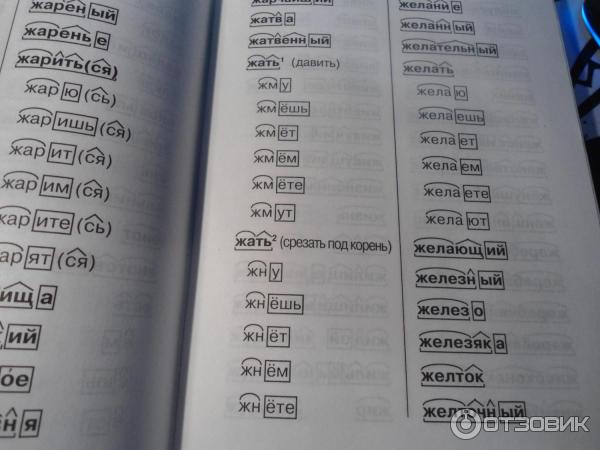 Coffee)
Coffee)

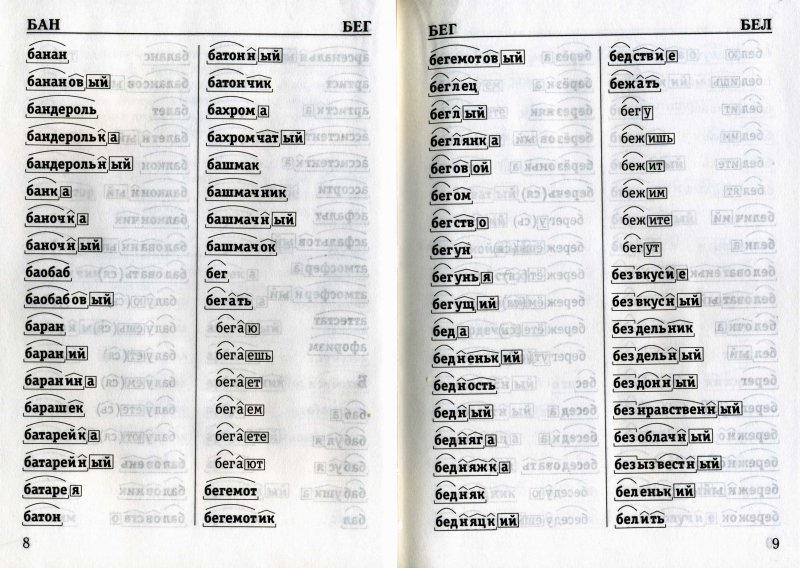 Он вычисляет тональность на основе того, как слова составляют значение более длинных фраз.
Таким образом, модель не так легко обмануть, как предыдущие модели. Например, наша модель узнала, что funny и witty положительны, но следующее предложение в целом все еще отрицательное:
Он вычисляет тональность на основе того, как слова составляют значение более длинных фраз.
Таким образом, модель не так легко обмануть, как предыдущие модели. Например, наша модель узнала, что funny и witty положительны, но следующее предложение в целом все еще отрицательное: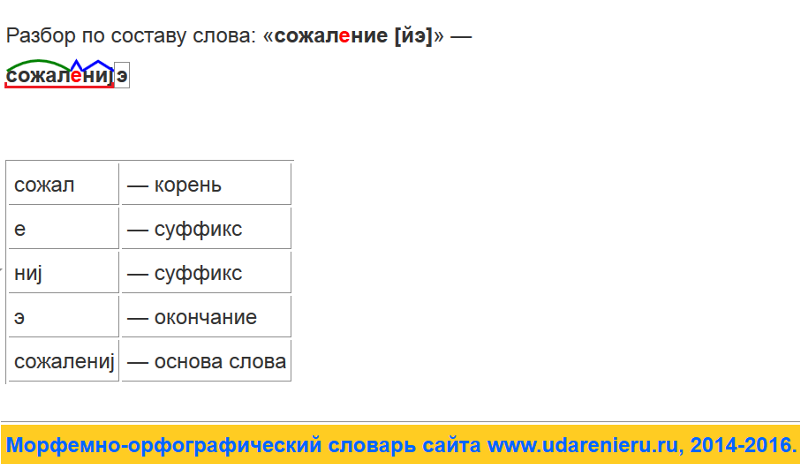 Дальнейший прогресс в понимании композиционности в таких задачах, как обнаружение настроений, требует более обширных контролируемых ресурсов обучения и оценки, а также более мощных моделей композиции.
Чтобы исправить это, мы вводим дерево настроений.Он включает мелкозернистые метки тональности для 215 154 фраз в деревьях синтаксического анализа из 11 855 предложений и представляет новые проблемы для композиционной тональности.
Для их решения мы представляем рекурсивную нейронную тензорную сеть. При обучении на новом банке деревьев эта модель превосходит все предыдущие методы по нескольким показателям. Это подталкивает современную положительную / отрицательную классификацию одним предложением с 80% до 85,4%. Точность прогнозирования тонких меток тональности для всех фраз достигает 80.7%, что на 9,7% больше по сравнению с базовым набором функций. Наконец, это единственная модель, которая может точно уловить эффект контрастирующих союзов, а также отрицание и его объем на различных уровнях дерева как для положительных, так и для отрицательных фраз.
Дальнейший прогресс в понимании композиционности в таких задачах, как обнаружение настроений, требует более обширных контролируемых ресурсов обучения и оценки, а также более мощных моделей композиции.
Чтобы исправить это, мы вводим дерево настроений.Он включает мелкозернистые метки тональности для 215 154 фраз в деревьях синтаксического анализа из 11 855 предложений и представляет новые проблемы для композиционной тональности.
Для их решения мы представляем рекурсивную нейронную тензорную сеть. При обучении на новом банке деревьев эта модель превосходит все предыдущие методы по нескольким показателям. Это подталкивает современную положительную / отрицательную классификацию одним предложением с 80% до 85,4%. Точность прогнозирования тонких меток тональности для всех фраз достигает 80.7%, что на 9,7% больше по сравнению с базовым набором функций. Наконец, это единственная модель, которая может точно уловить эффект контрастирующих союзов, а также отрицание и его объем на различных уровнях дерева как для положительных, так и для отрицательных фраз.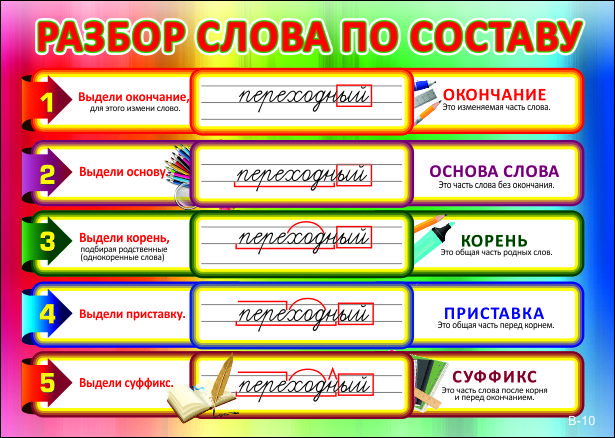

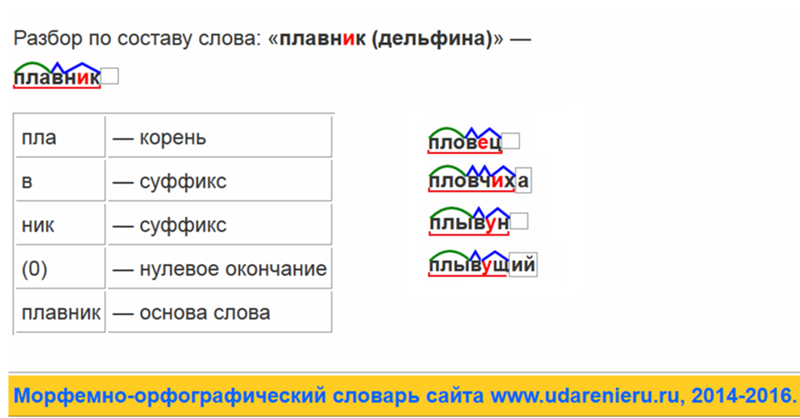 Большинство экспертов предлагают средне-мелкую текстуру, похожую на песок, однако идеальный состав зависит от того, сколько аромата вы хотите извлечь из жаркого.
Большинство экспертов предлагают средне-мелкую текстуру, похожую на песок, однако идеальный состав зависит от того, сколько аромата вы хотите извлечь из жаркого.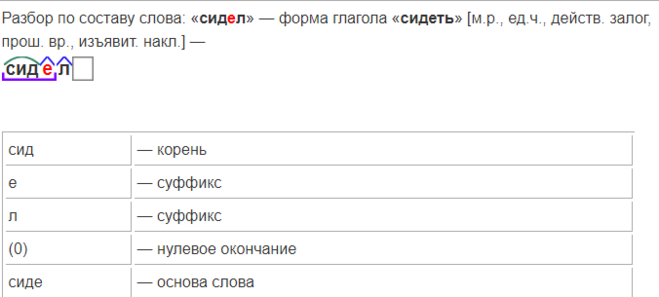 Если вы не используете термометр, доведите воду до кипения и дайте ей остыть в течение 30 секунд, прежде чем начинать заваривать.
Если вы не используете термометр, доведите воду до кипения и дайте ей остыть в течение 30 секунд, прежде чем начинать заваривать.